Camouflaged animals are hiding in every one of these photos — can you spot them all?

Discover the fascinating world of camouflage and masterful mimicry in this gallery of hidden animals. From elusive snow leopards to tiny mantises, these animals of all shapes and sizes can blend seamlessly into their environments.
Walking leaves
Just a photo of leaves? Take a closer look …
Found across Asia, three leaf insects (Cryptophyllium westwoodii) cling to the wooden branches of a plant.
Hidden beneath the sand
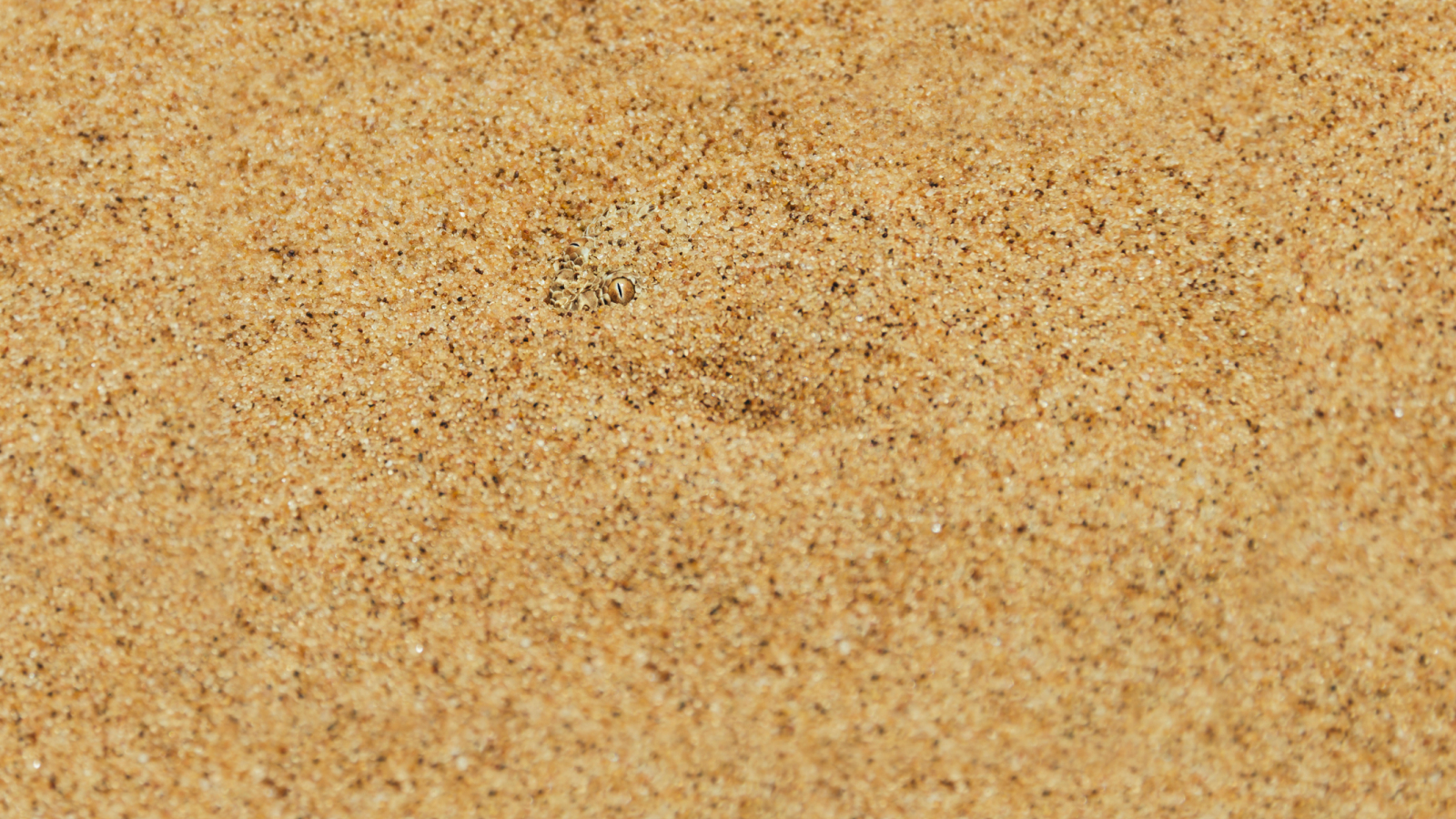
The venomous horned rattlesnake (Crotalus cerastes) is a master of disguise. Hidden deep within the sand, it waits patiently for its prey to come near before striking. It is sometimes called the sidewinder rattlesnake because it throws its body sideways across the ripples in the sand to move around very quickly.
Somewhere in this photo, a golden eye can be seen peeking out from beneath the sand.
Pygmy seahorse
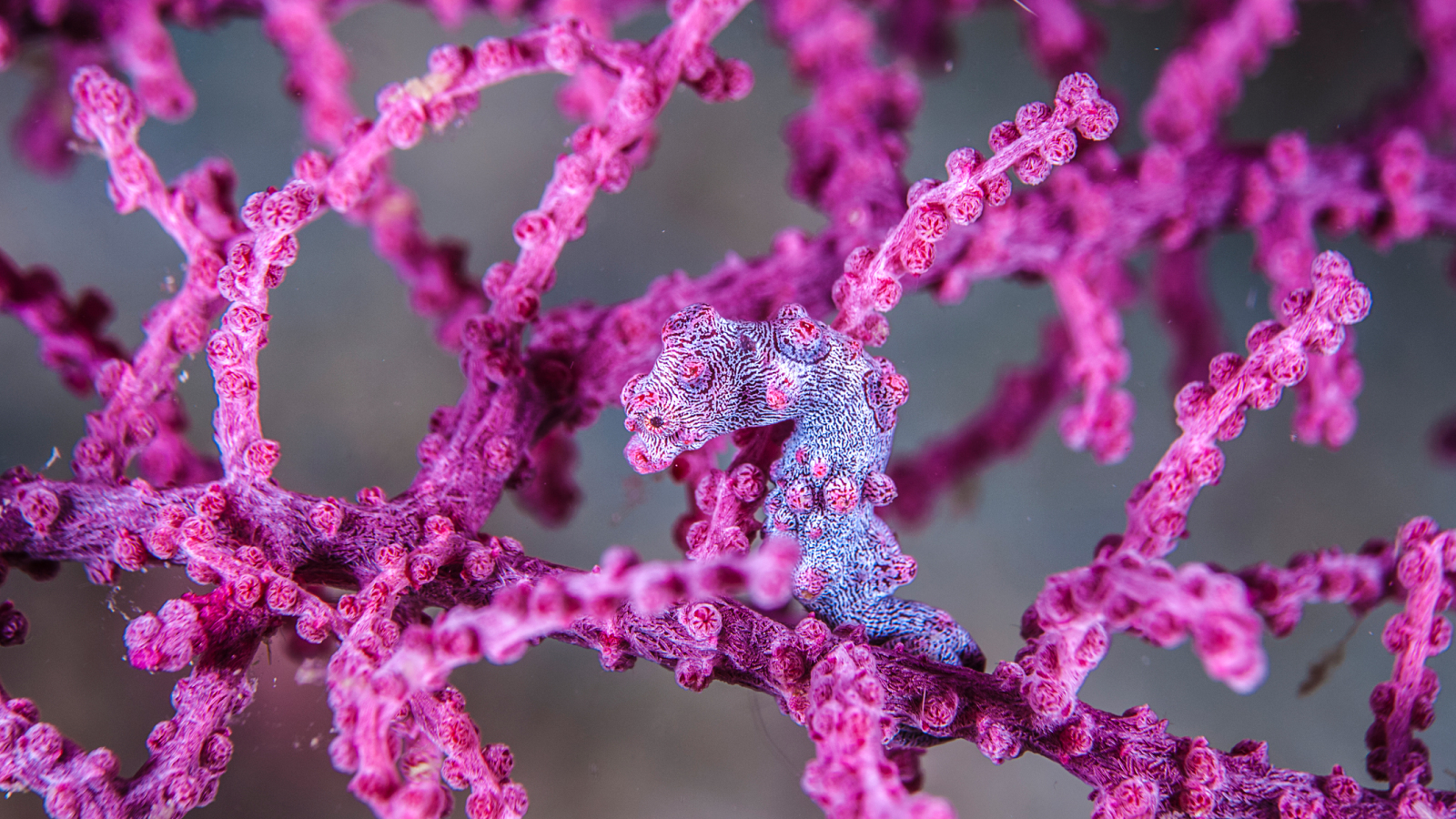
Hippocampus bargibanti was the first pygmy seahorse described in the world. As the name suggests, pygmy seahorses are incredibly tiny, only growing to 0.8 inch (2 centimeters) in length. They seamlessly blend into the coral in the ocean.
A family of mallard ducks
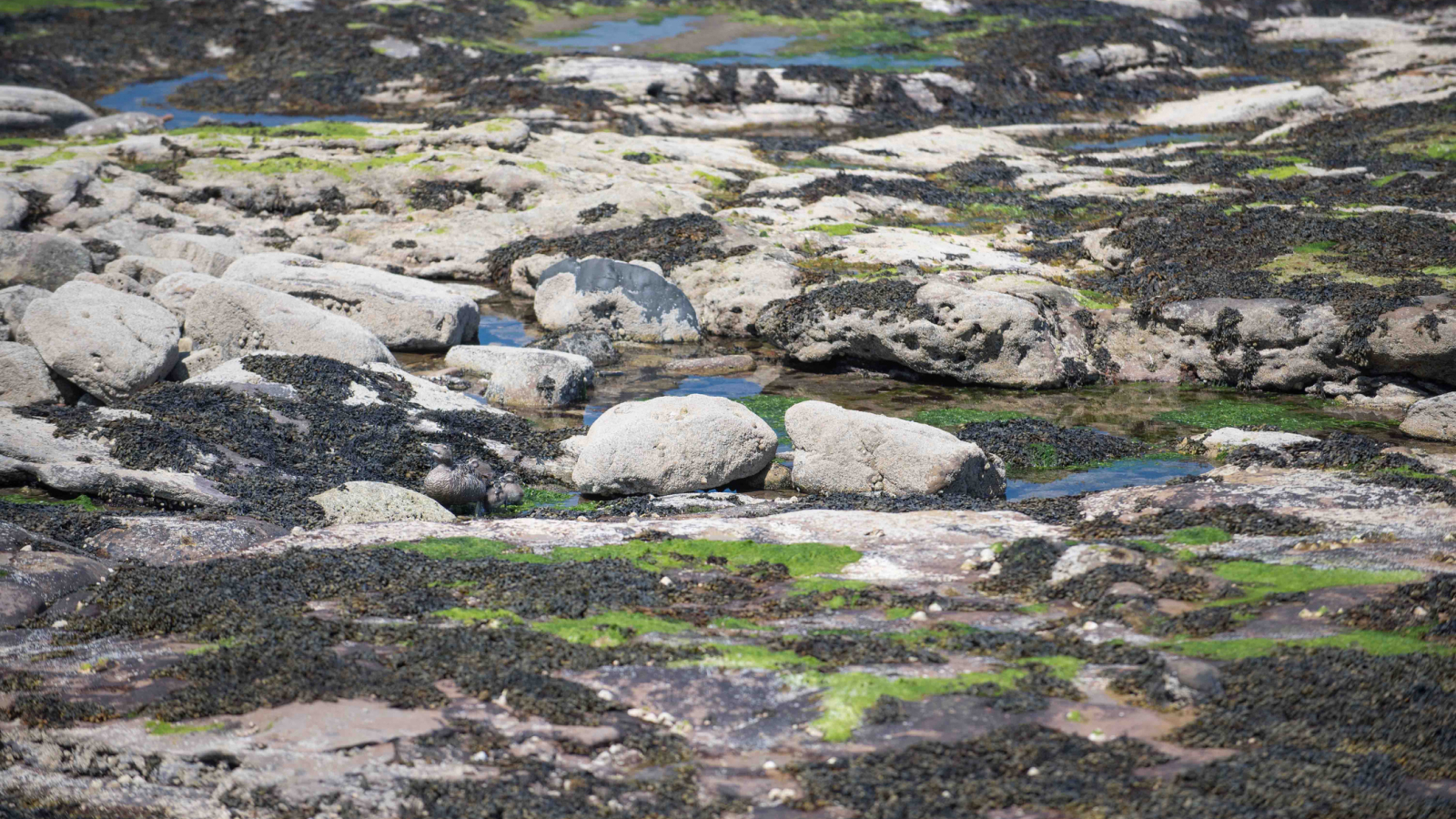
Time for a tricky one. Amid this rocky shore, a mother mallard (Anas platyrhynchos) and her three baby chicks are camouflaged perfectly against the terrain.
Almost mistaken as another group of rocks, they sit just left of the two big rocks in the center frame.
Color-changing antics
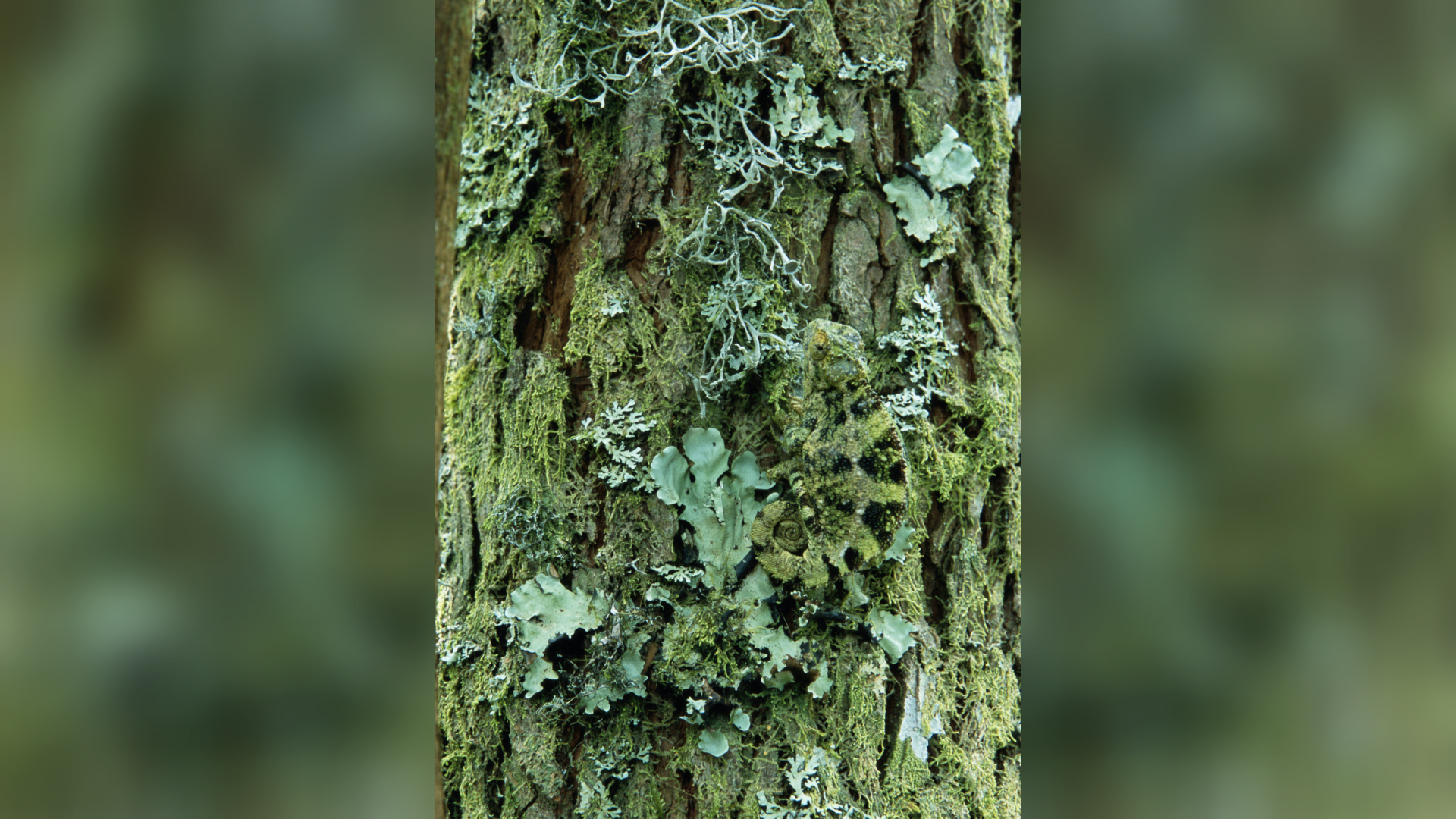
Chameleons are famous for their camouflage. Their ability to change color is controlled primarily by their top skin layer, which can change its structure to manipulate how light is reflected.
In this photo, a high-casqued chameleon (Trioceros hoehnelii) hides among the lichen- and moss-covered tree bark.
Lurking in the coral
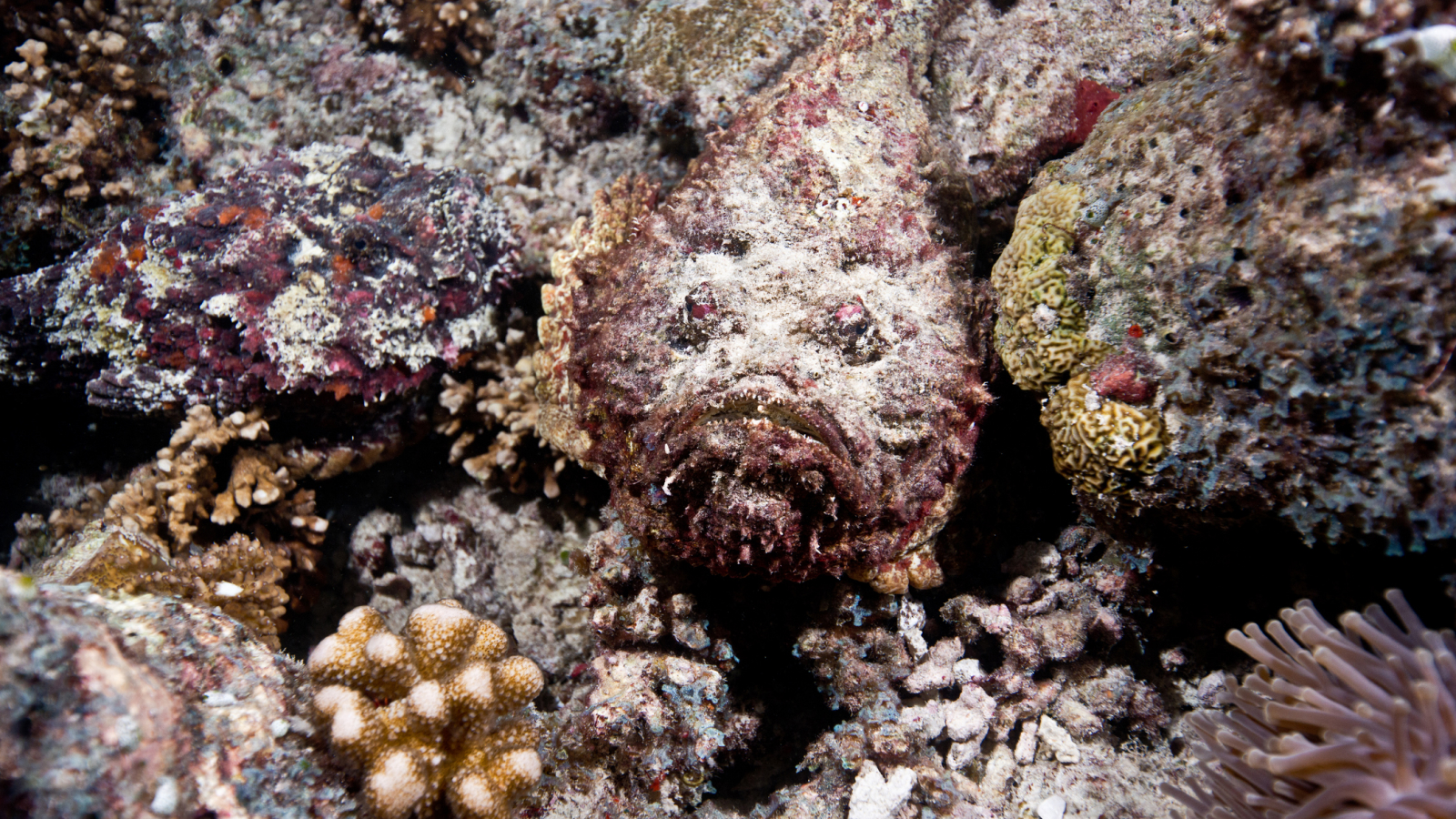
The most venomous fish in the world is the stonefish (Synanceia verrucosa), and it has a disturbing resemblance to coral-covered rocks in shallow waters.
Look closely, and you may be able to see a face emerge from the coral.
Peering through the tall grass
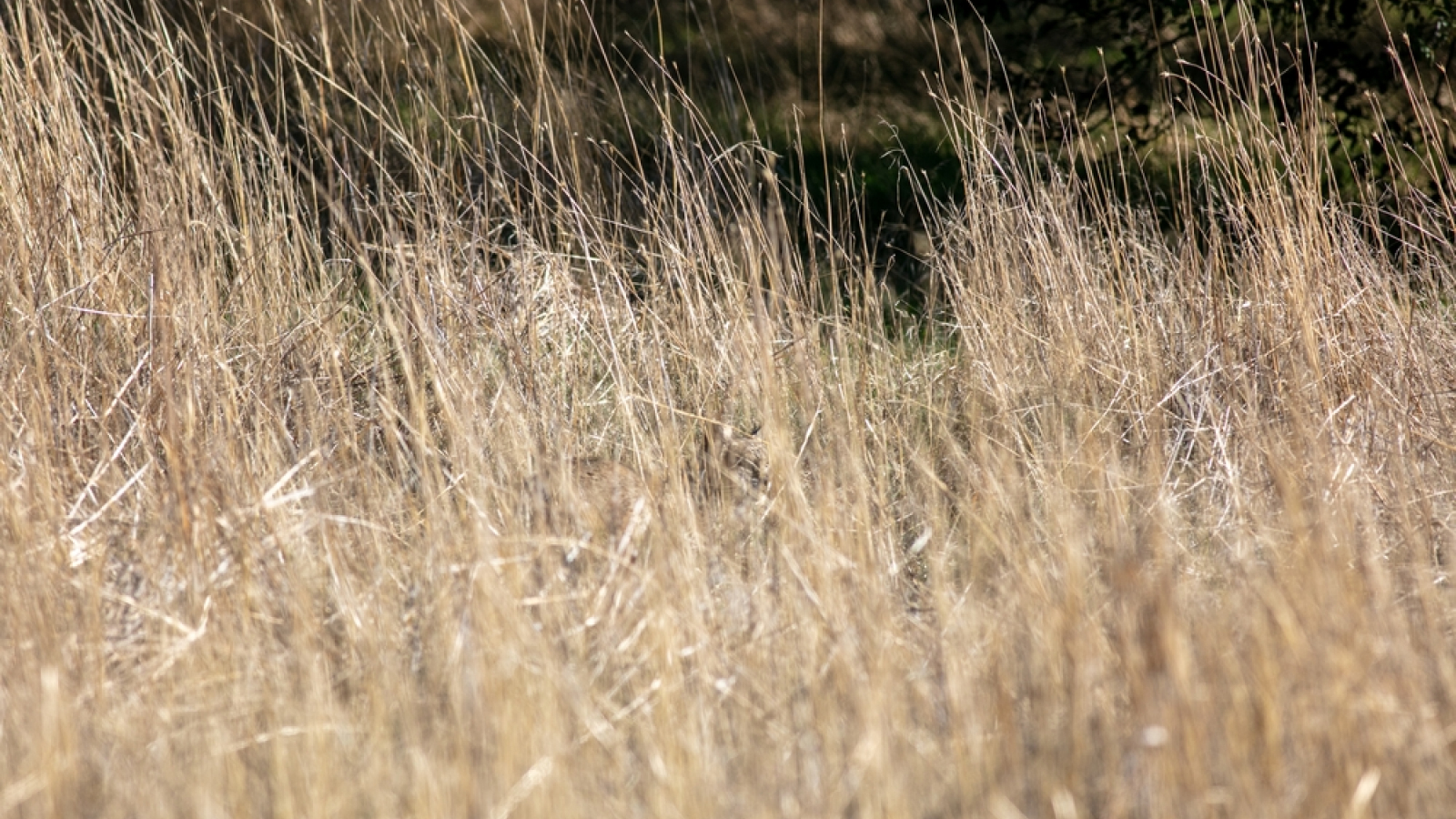
A wildcat lurks through the tall grass in this photo. Can you spot it?
Bobcats (Lynx rufus) are quiet hunters that use their dull, dense coats to blend into their surroundings before they pounce at prey.
Himalayan tahr
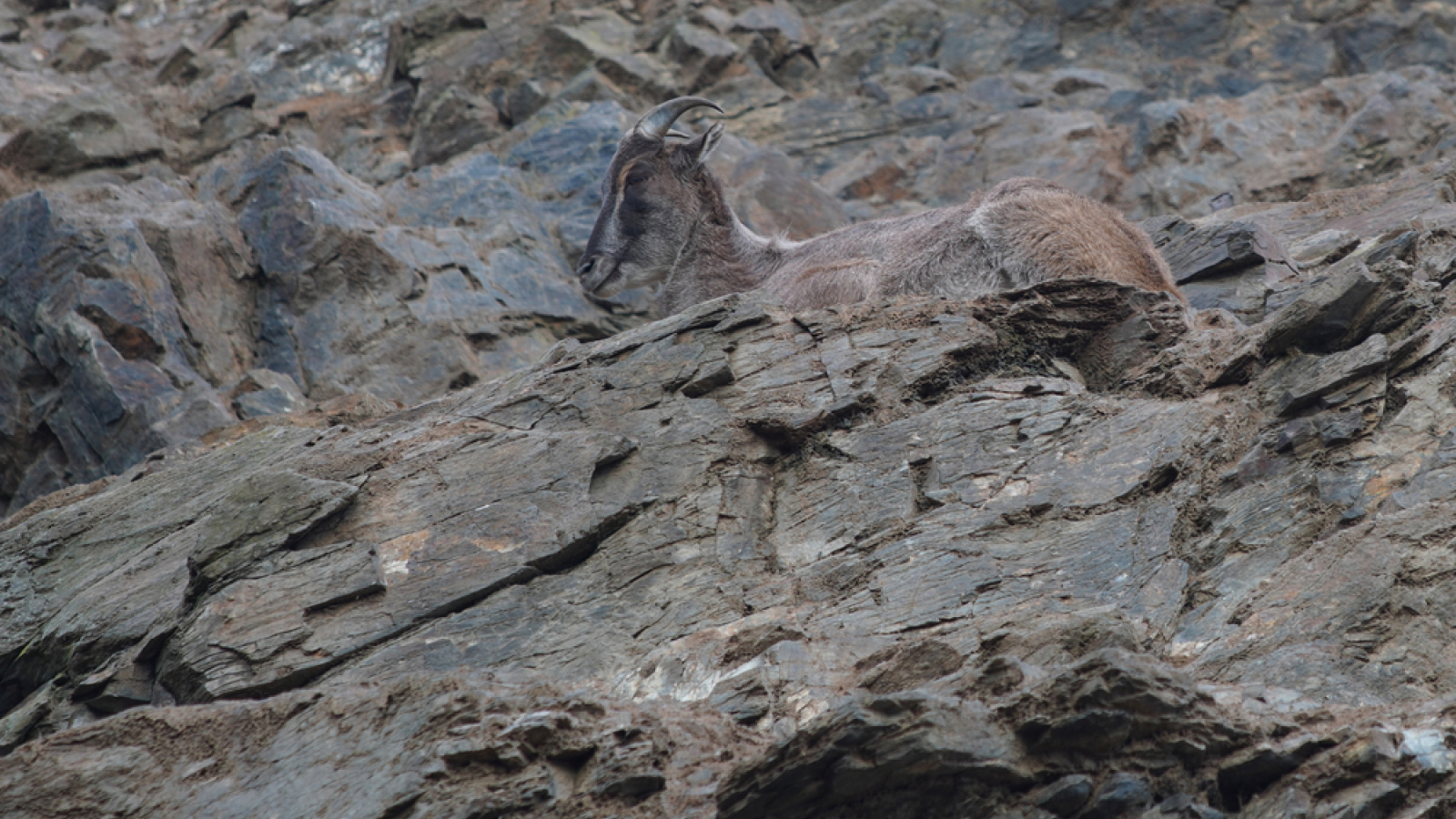
In the Himalayas and certain parts of New Zealand, large hoofed and goat-like Himalayan tahrs (Hemitragus jemlahicus) live on the mountain slopes and hillsides.
Up high in the trees
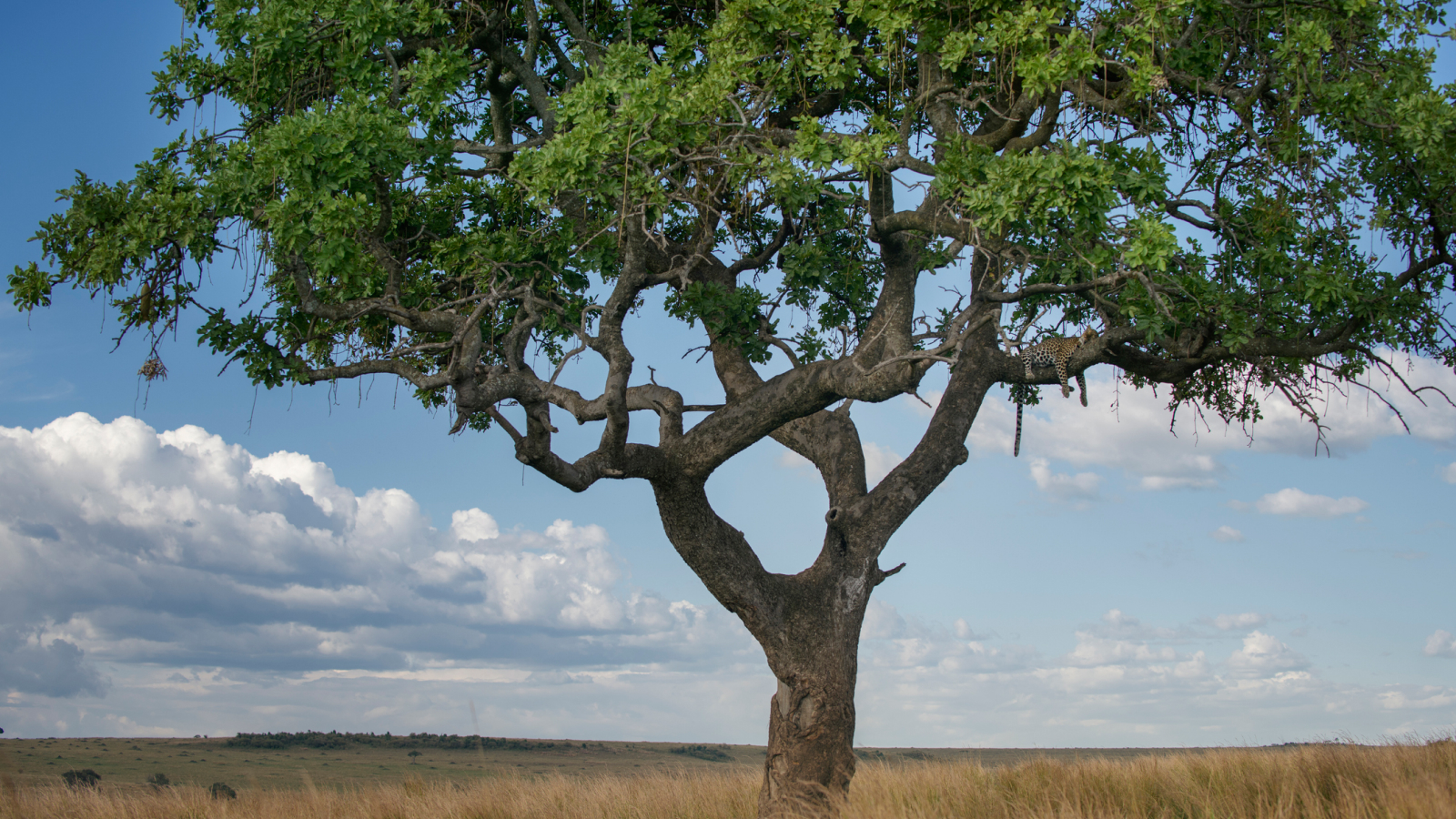
Spotted coats help leopards (Panthera pardus) blend into tall grass or tree canopies.
Buried for protection
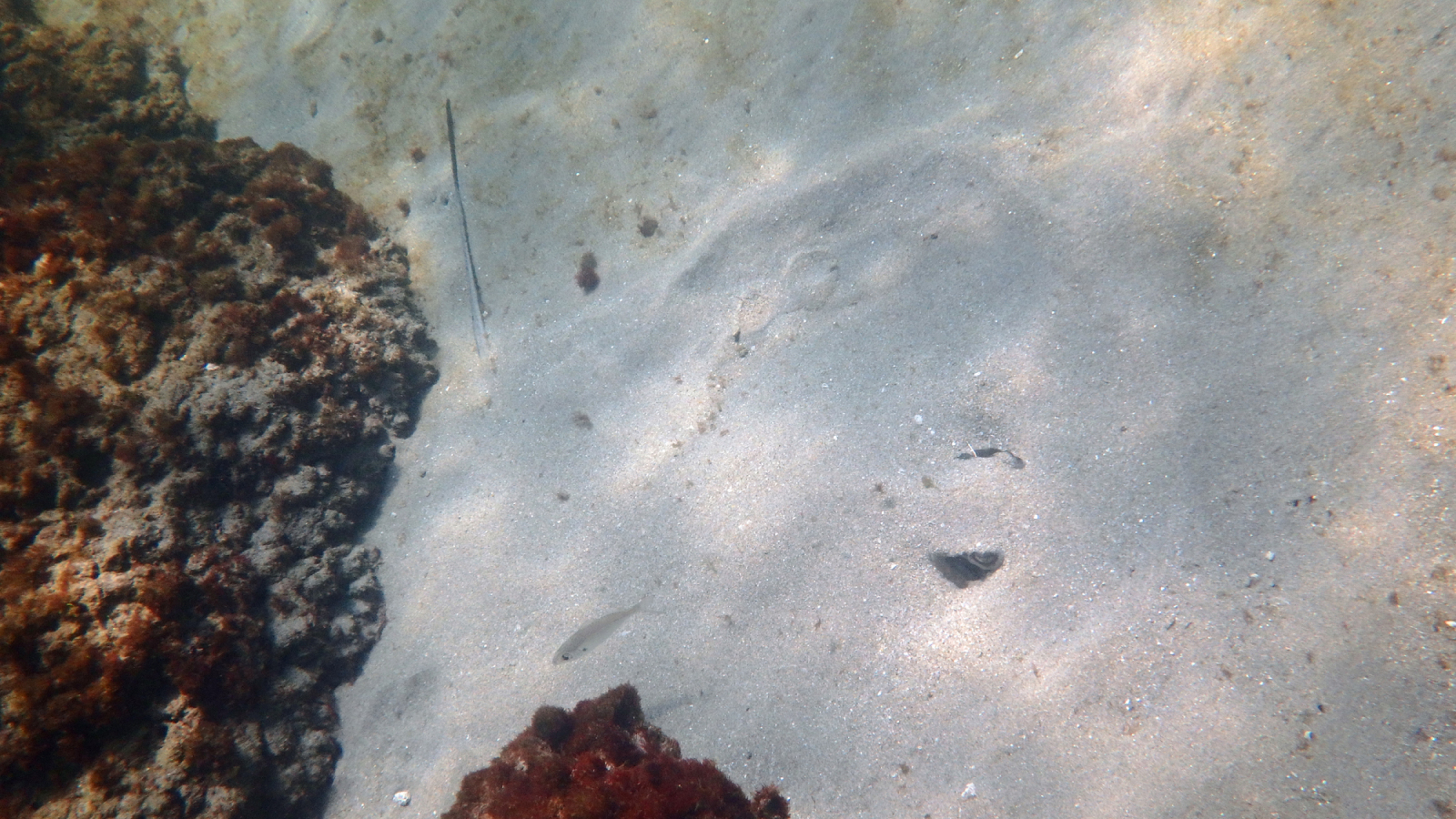
While they rest and digest their food, stingrays use their wings to bury themselves in the sand to hide from predators.
Look closely to spot a pointed tail protruding from the sand.
Wild waved sphinx moth
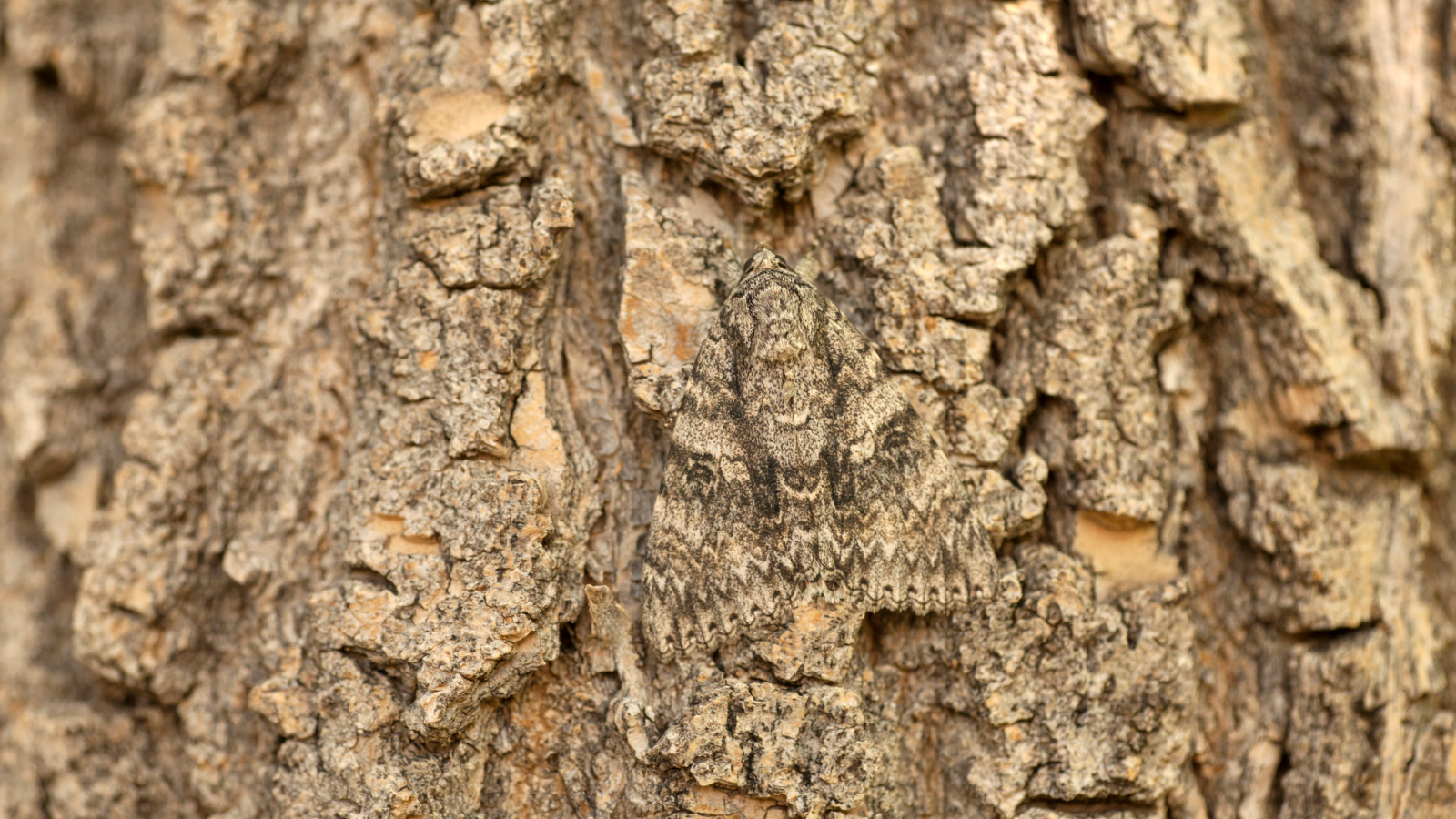
Hiding in plain sight, the waved sphinx moth (Ceratomia undulosa) rests on the bark of a tree.
Amidst the rocky terrain
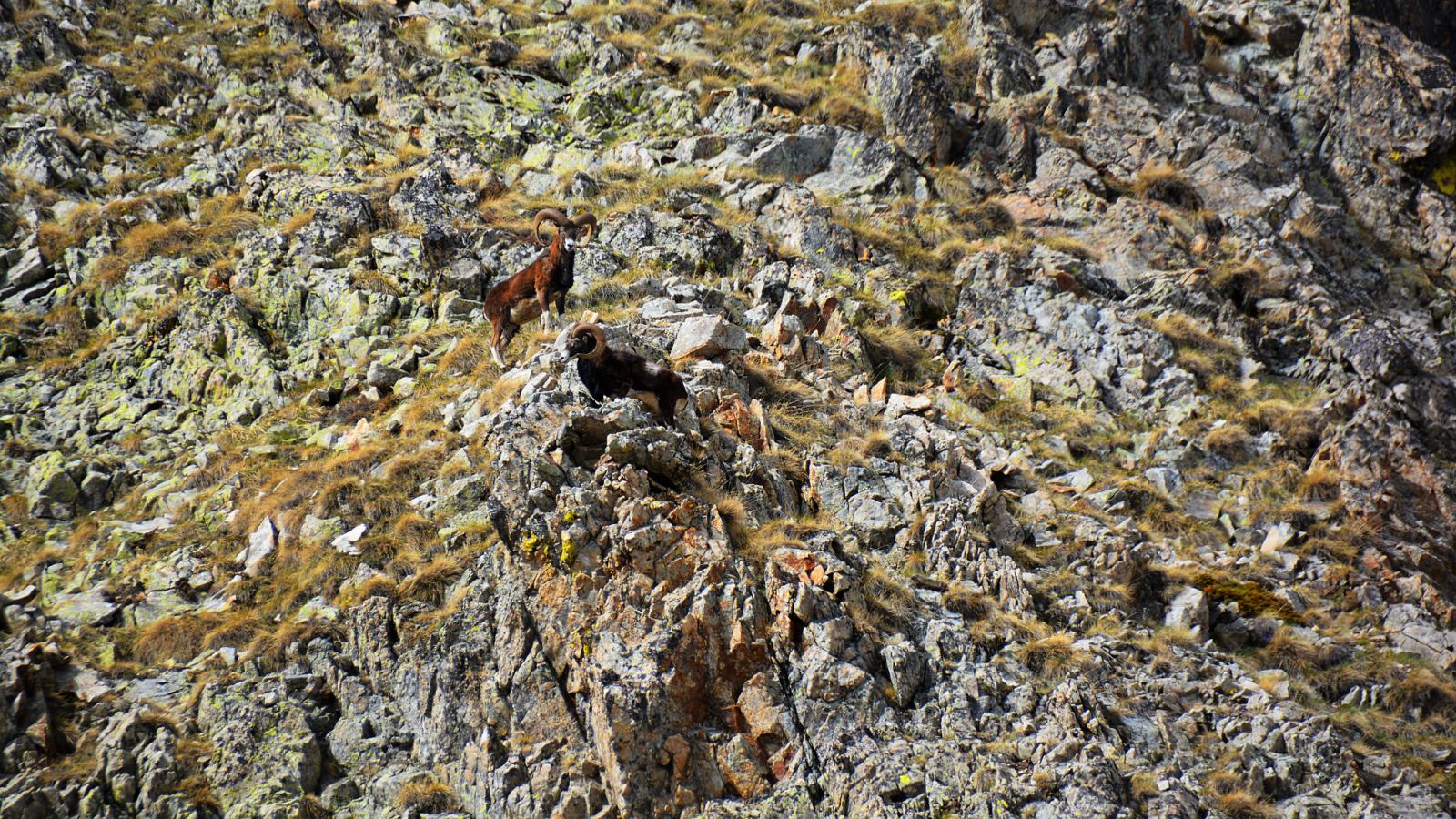
This photo was taken in France’s Mercantour National Park after mountain goats were spotted moving across the mountainside.
Hidden in the tundra
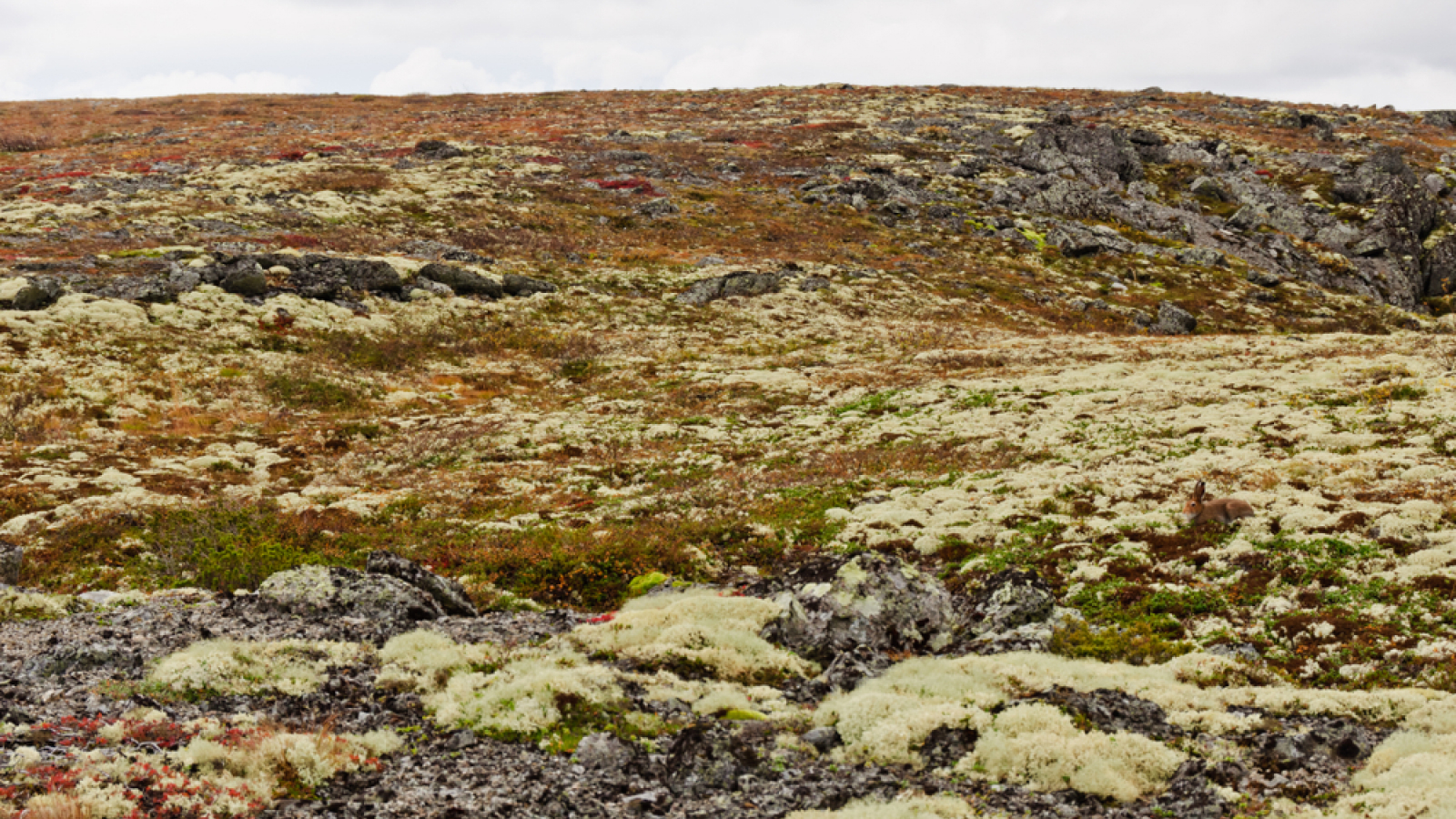
Another challenge: Spot the camouflaged hare, which is nearly invisible among the moss, lichen and rocks in the tundra.
White-tailed deer
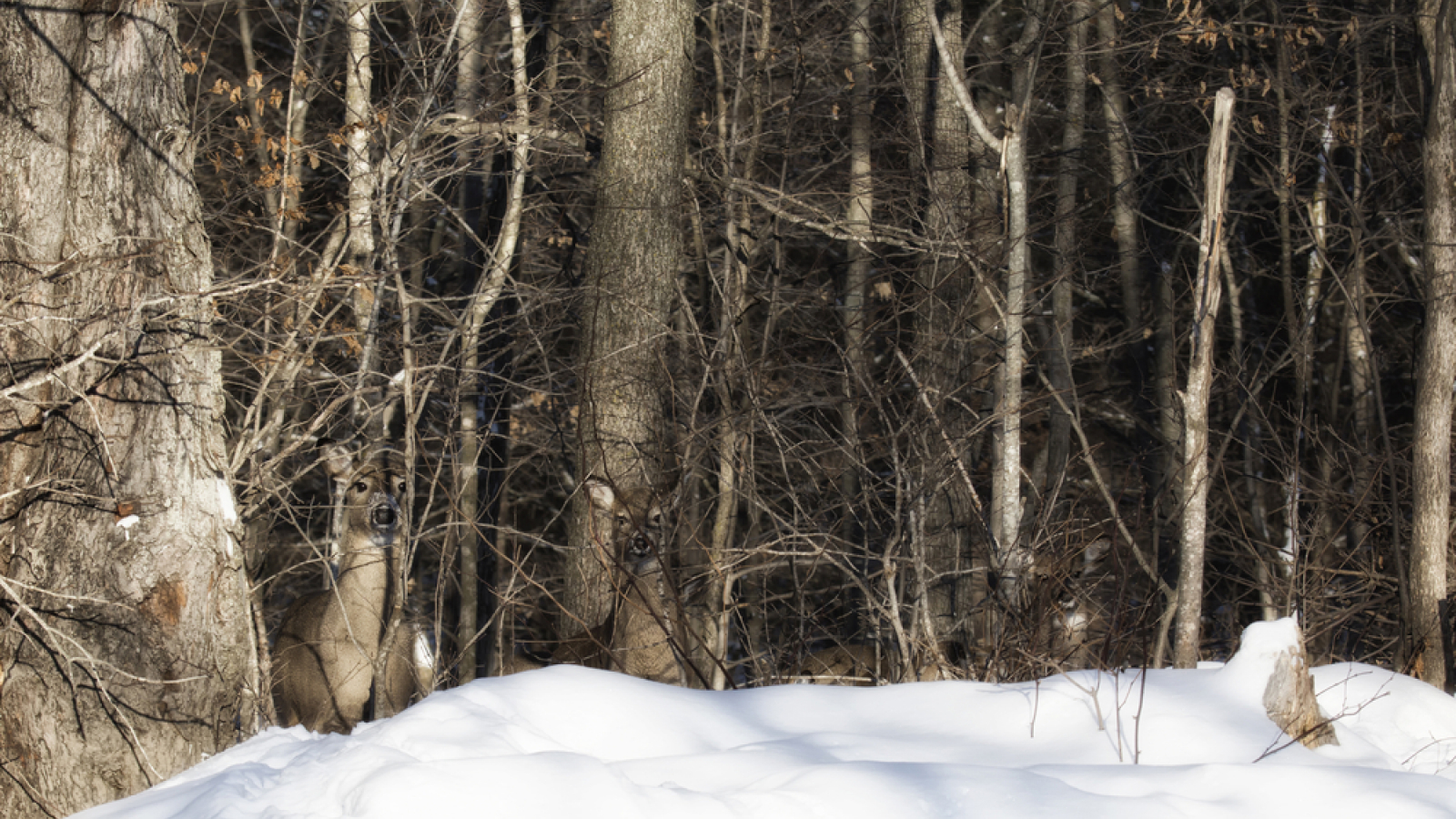
Behind the trees is a group of white-tailed deer (Odocoileus virginianus), which can be found throughout most of North America.
Although their coats change color from reddish-brown to gray in the winter for camouflage, these deer depend on their excellent hearing and speed to escape large predators such as wolves, bears and mountain lions.
How many do you see?
Hidden woodland songbird
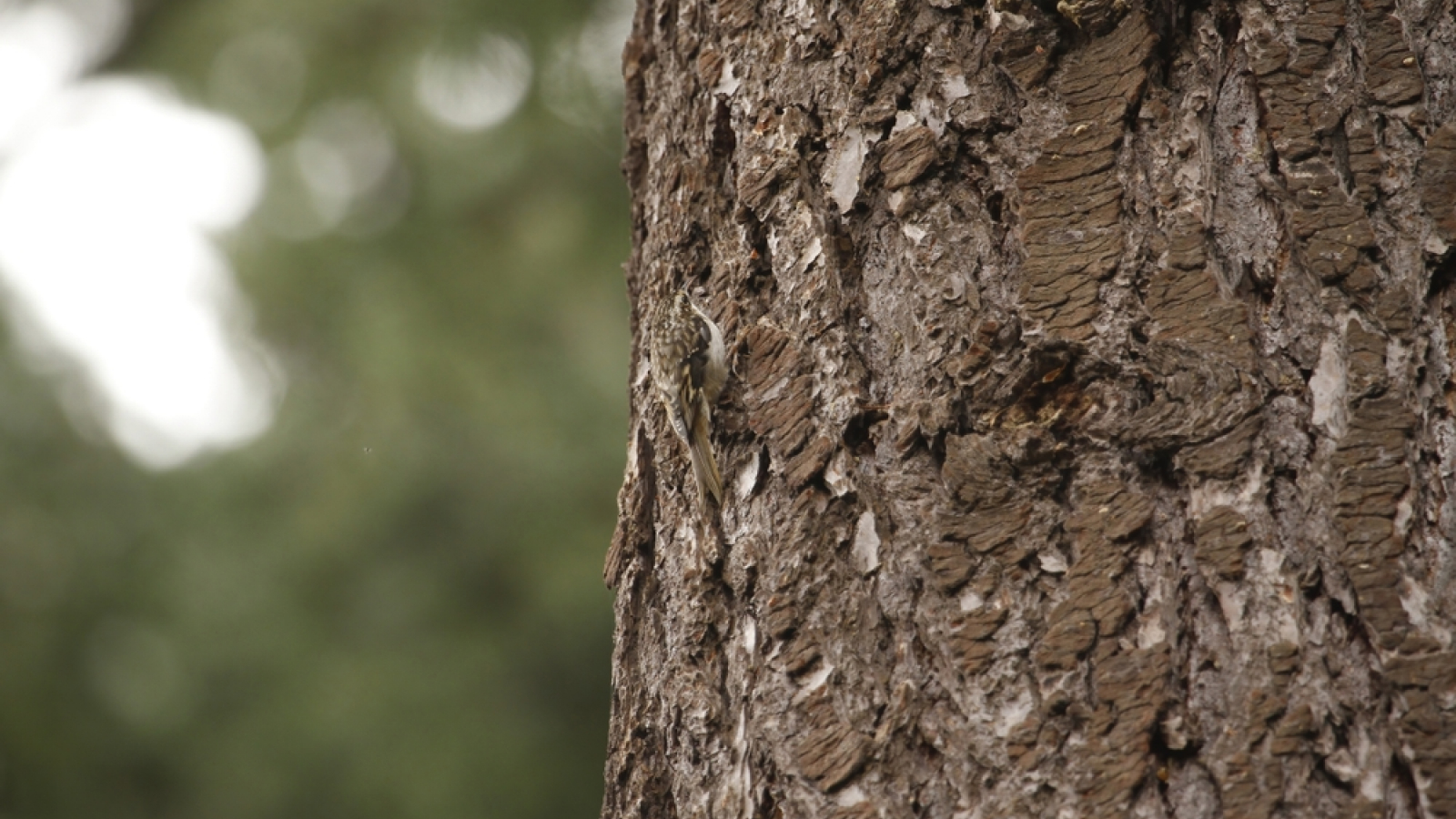
Rightly named a brown creeper (Certhia americana), this tiny, woodland songbird is a common-but-elusive critter in Central America. These birds spiral up and down large trees, looking for loose bark to nest behind. Their brown and speckled bodies make it difficult to find them when they are perched on a tree.
Concealed in the moors
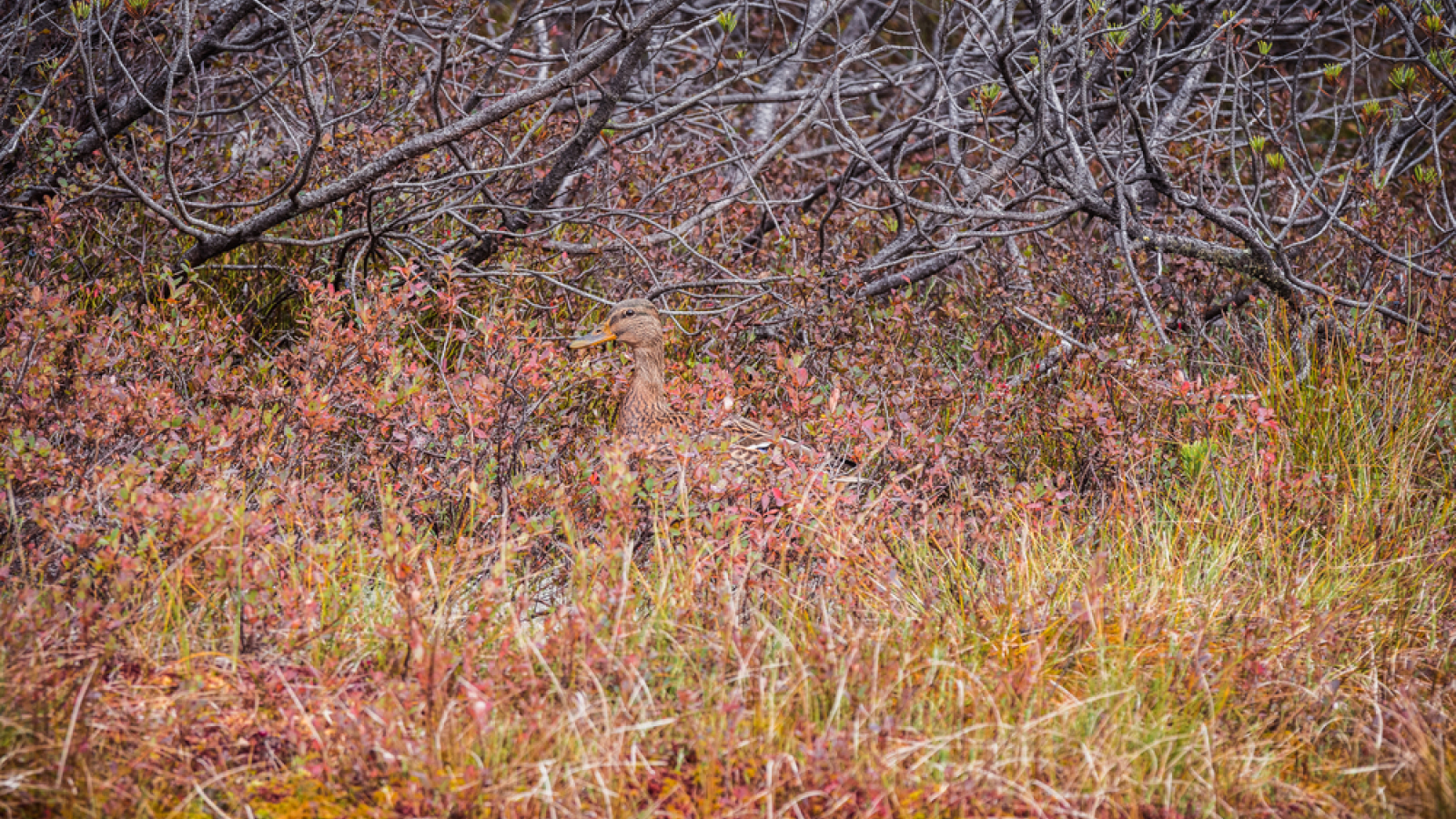
The mottled brown and tan plumage of this wild mallard helps it blend into its surroundings, providing perfect concealment amid the grass of the moors.
Mimicking caterpillar
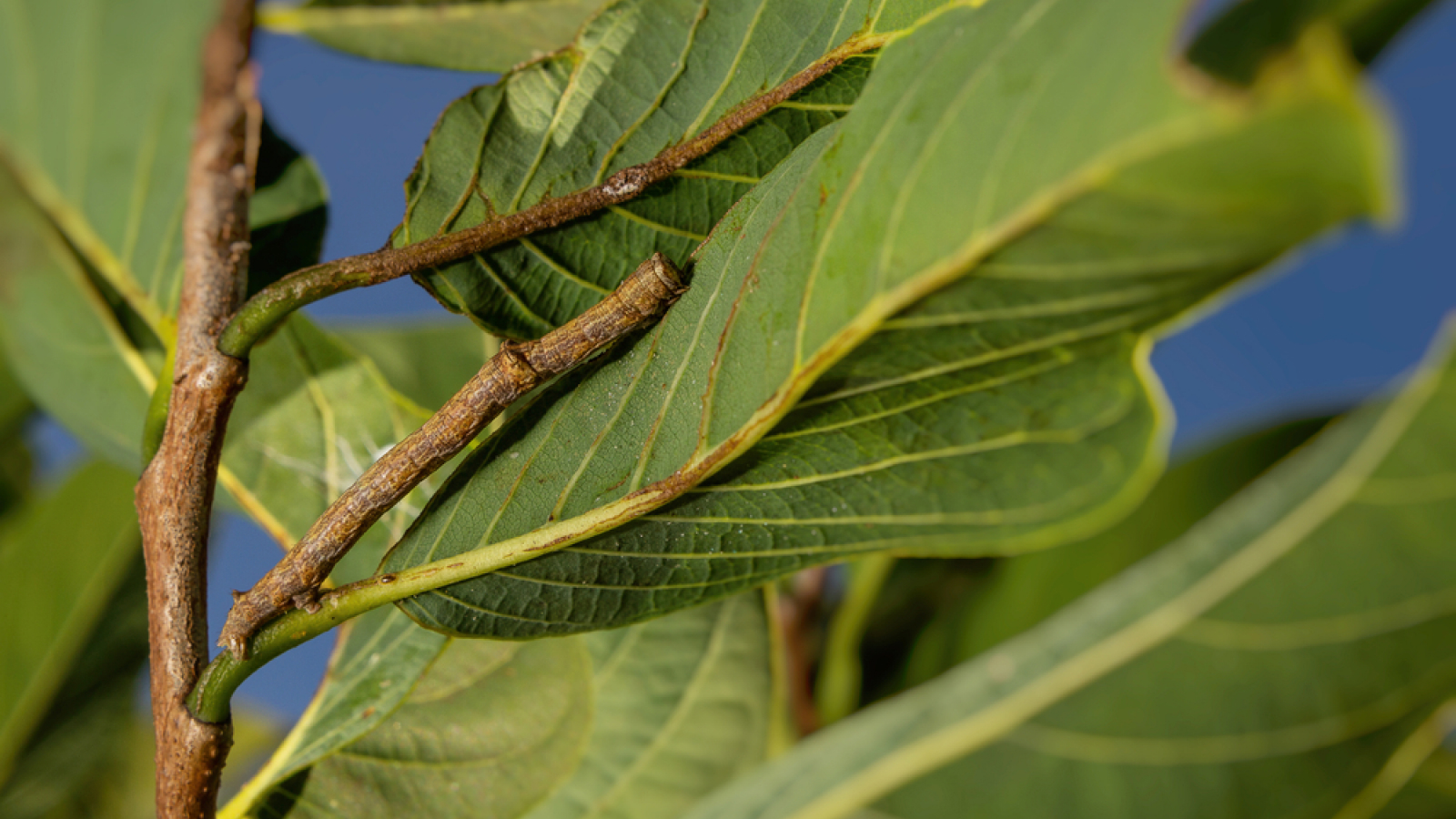
Many insects use camouflage to mimic objects or animals. Many species of caterpillar in the family Geometridae use camouflage to mimic twigs on plants. Some copy not only the shape, but also the color of a twig.
Mysterious nightjar
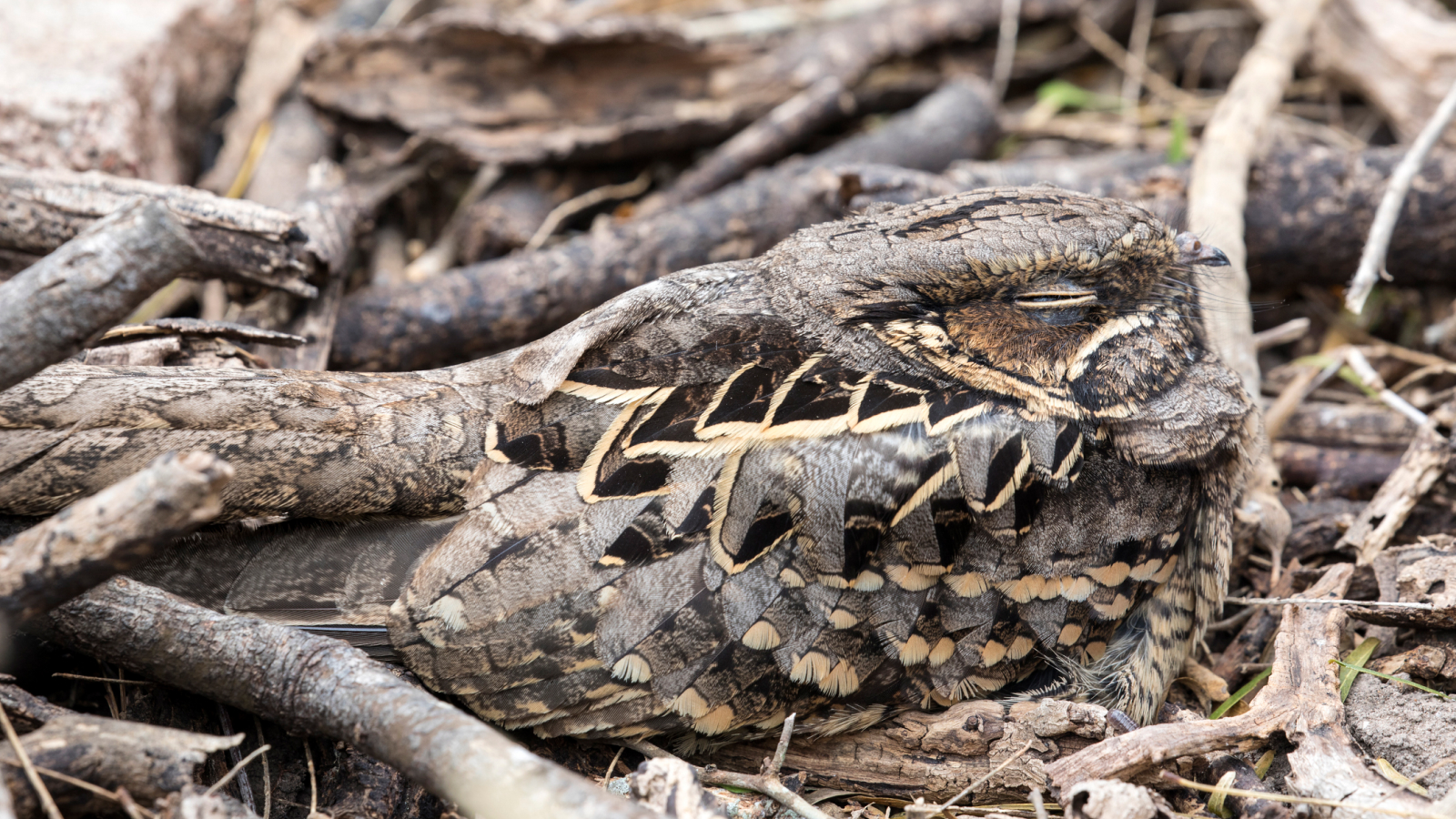
Is it a snake? A lizard? No, it’s a bird.
The common pauraque (Nyctidromus albicollis) is a type of nightjar. These medium-size birds have pointed wings and long tails and are active only at night.
During the day, this bird sleeps on the open ground, and its unique coloration allows it to remain hidden.
Cloaked stalking tiger
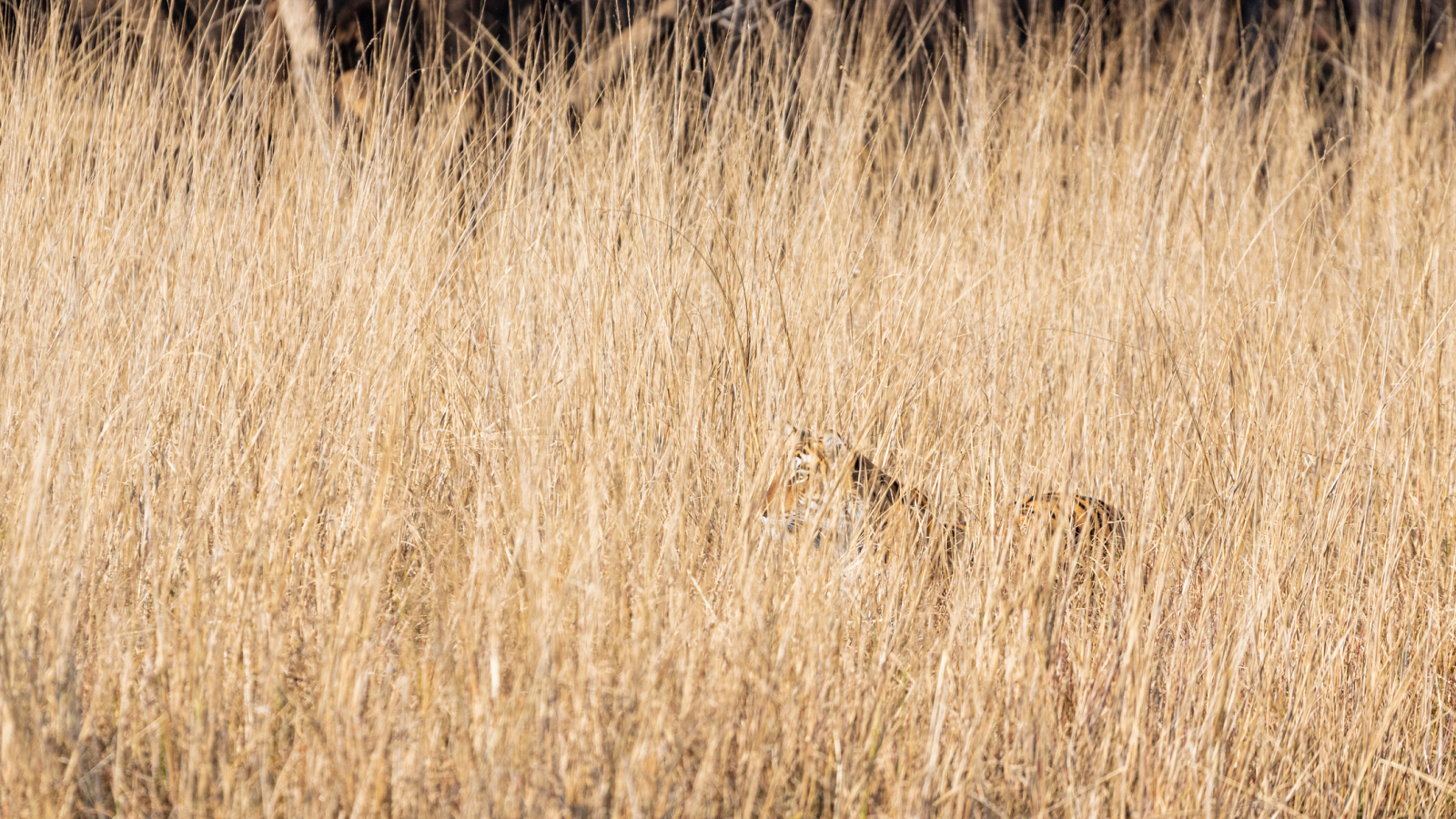
You may have been quick to spot the tiger prowling in the background of this photo, but if you were a deer, it would not have been that easy.
In the wild, tigers prey on many types of deer. Deer’s vision is limited to colors on a spectrum between green and blue. This means they don’t see the predator as orange, so the tiger would be green and thus hidden in the dried grass.
Brightly colored crab spider
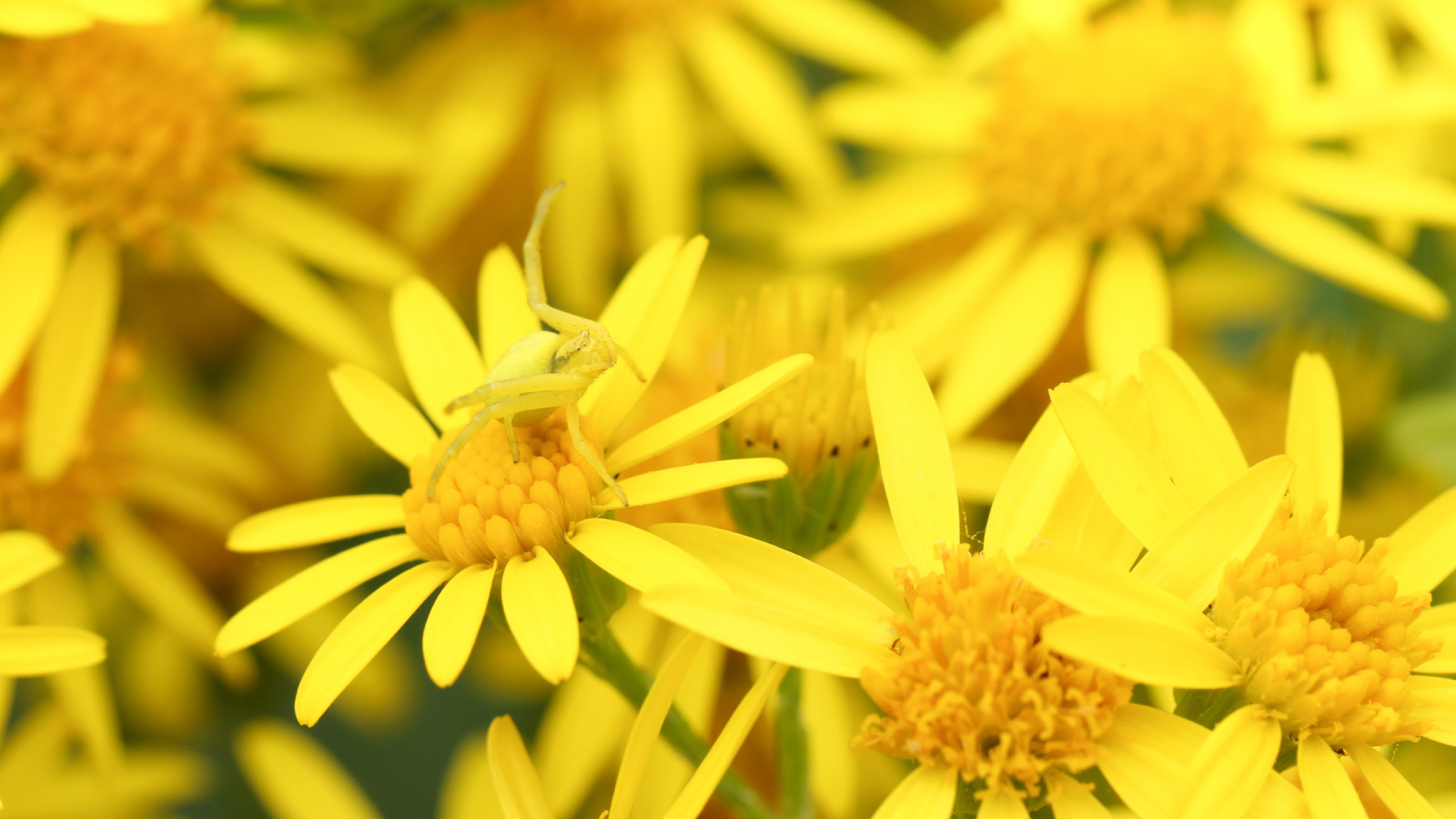
Camouflaged on the tops of flower heads, the goldenrod crab spider (Misumena vatia) waits, with its legs held out to its sides, for pollinating insects to ambush. These spiders’ cryptic colors allow them to hide in white or yellow flowers.
Devil scorpionfish
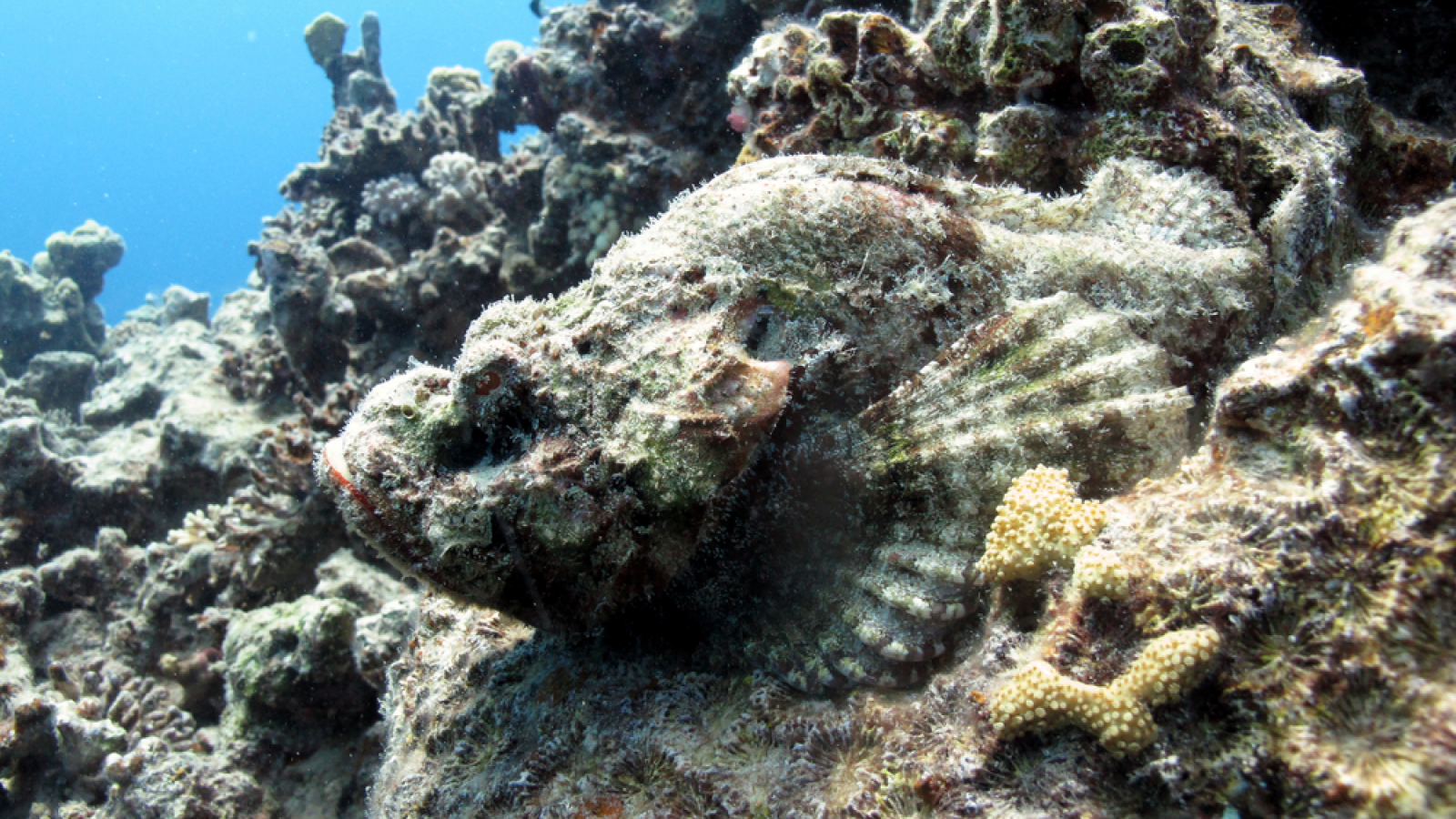
The devil scorpionfish (Scorpaenopsis diabolus) is a venomous and well-camouflaged marine fish found in the Indo-Pacific region. It possesses spines with toxic venom for defense and relies on its unique appearance to ambush prey.
This species is known for its intricate patterns and colors, making it a fascinating-yet-dangerous inhabitant of coral reefs.
Seamlessly hidden common sole
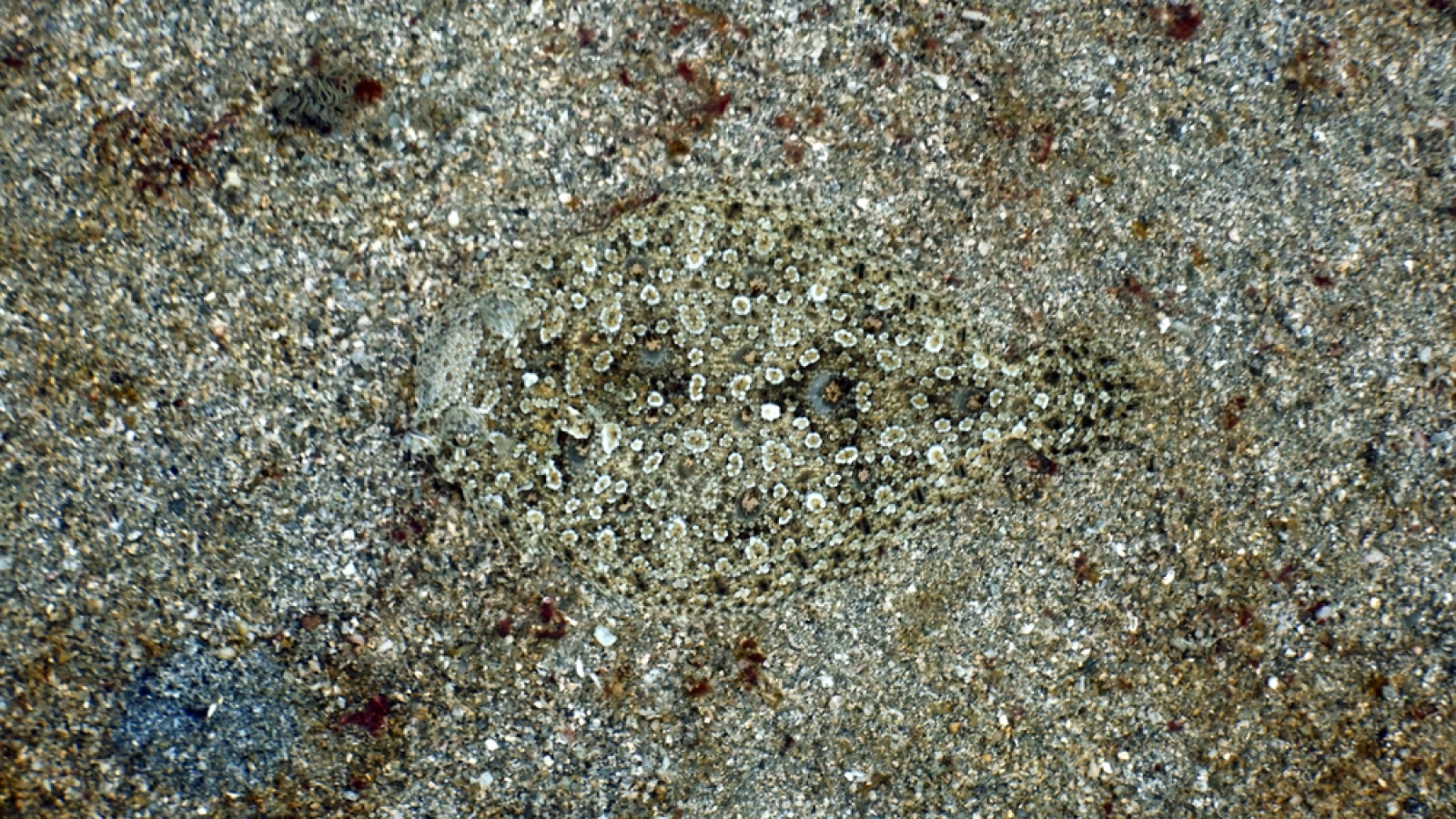
The common sole (Solea solea) is a flatfish that lives in the North Atlantic Ocean and Mediterranean Sea. Its upper side mimics the seafloor, blending in with the sand or gravel, while the underside is white to avoid detection from below while it swims. This adaptation helps the sole avoid predators and ambush prey effectively.
Protection for new born chicks
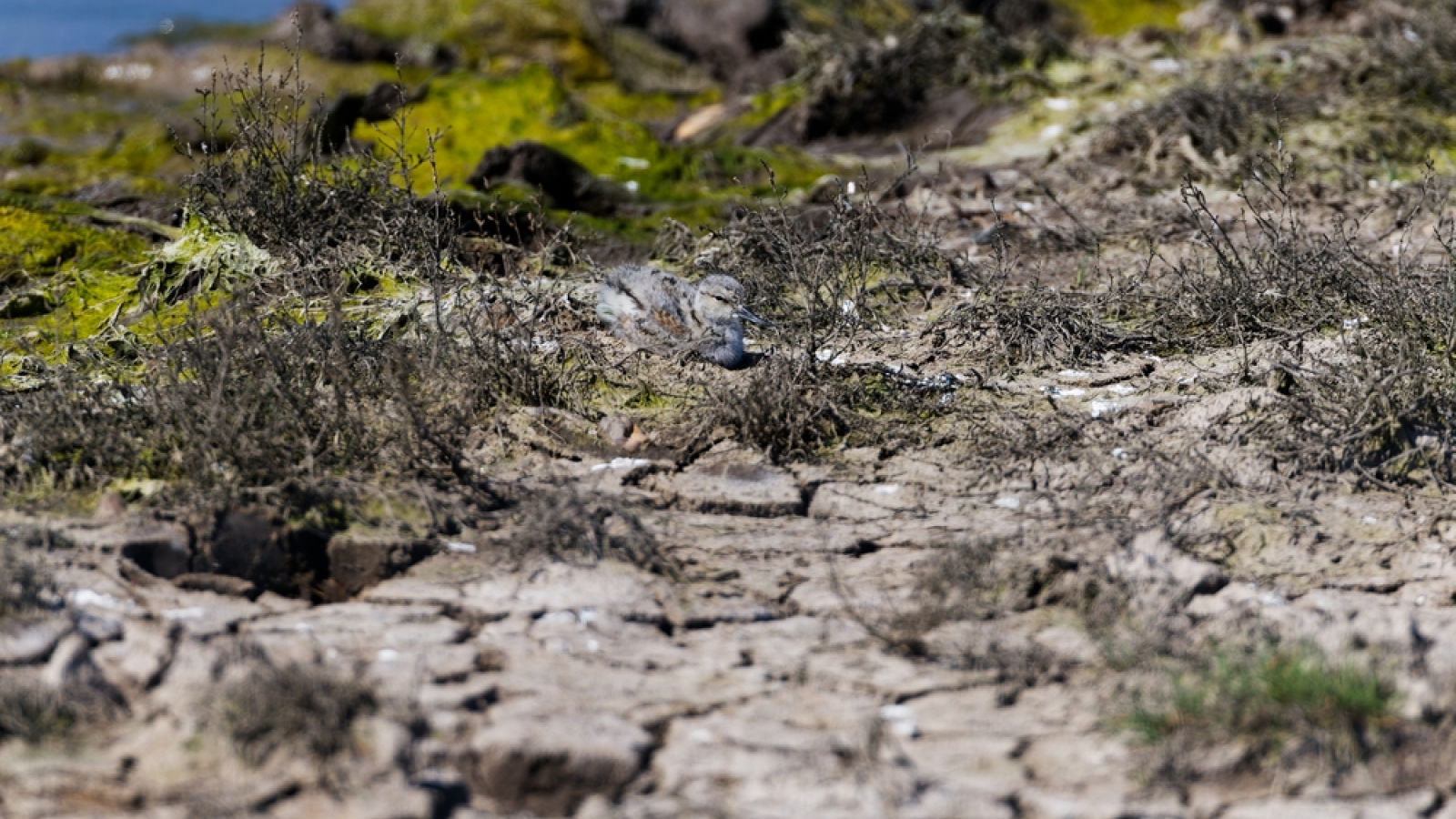
The pied avocet (Recurvirostra avosetta) is a shorebird that boasts a striking black-and-white pattern and an upturned bill, which the bird uses to sift through sand to find small invertebrates in shallow pools at low tide.
The chicks have silver-gray feathers, which provide effective camouflage in the avocet’s marshy habitat. This plumage helps the bird blend in with its surroundings, offering protection from potential predators. As the chicks grow, their black-and-white coloring will gradually appear.
Amidst the rocky terrain
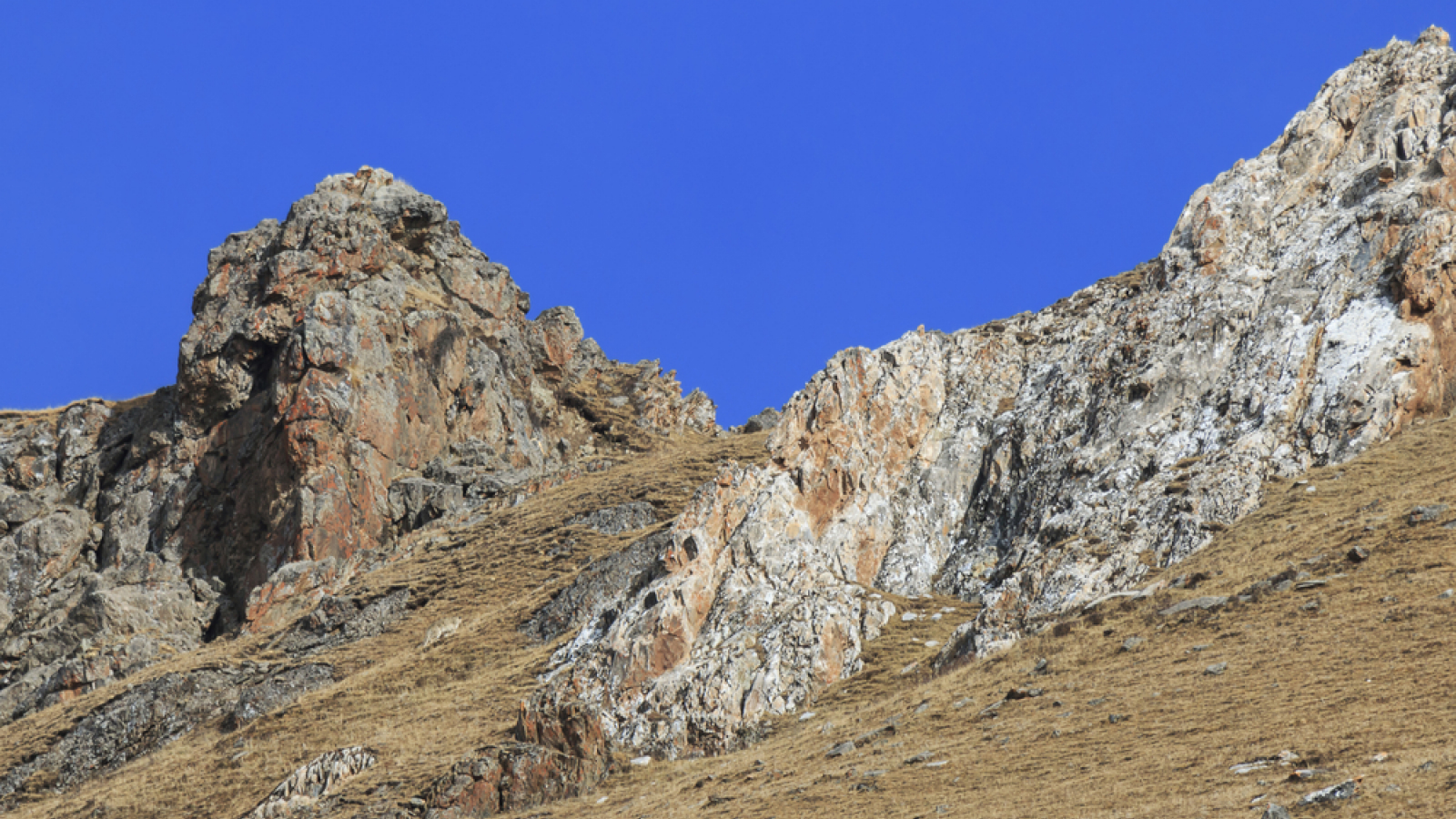
Let’s zoom out for this one.
Known for its shifty nature and distinctive coat, the snow leopard (Panthera uncia) inhabits the steep, rugged terrain of Central and South Asia. The snow leopard has a thick coat, wide paws and a long tail that it uses for balance while climbing mountains.
The king of camouflage
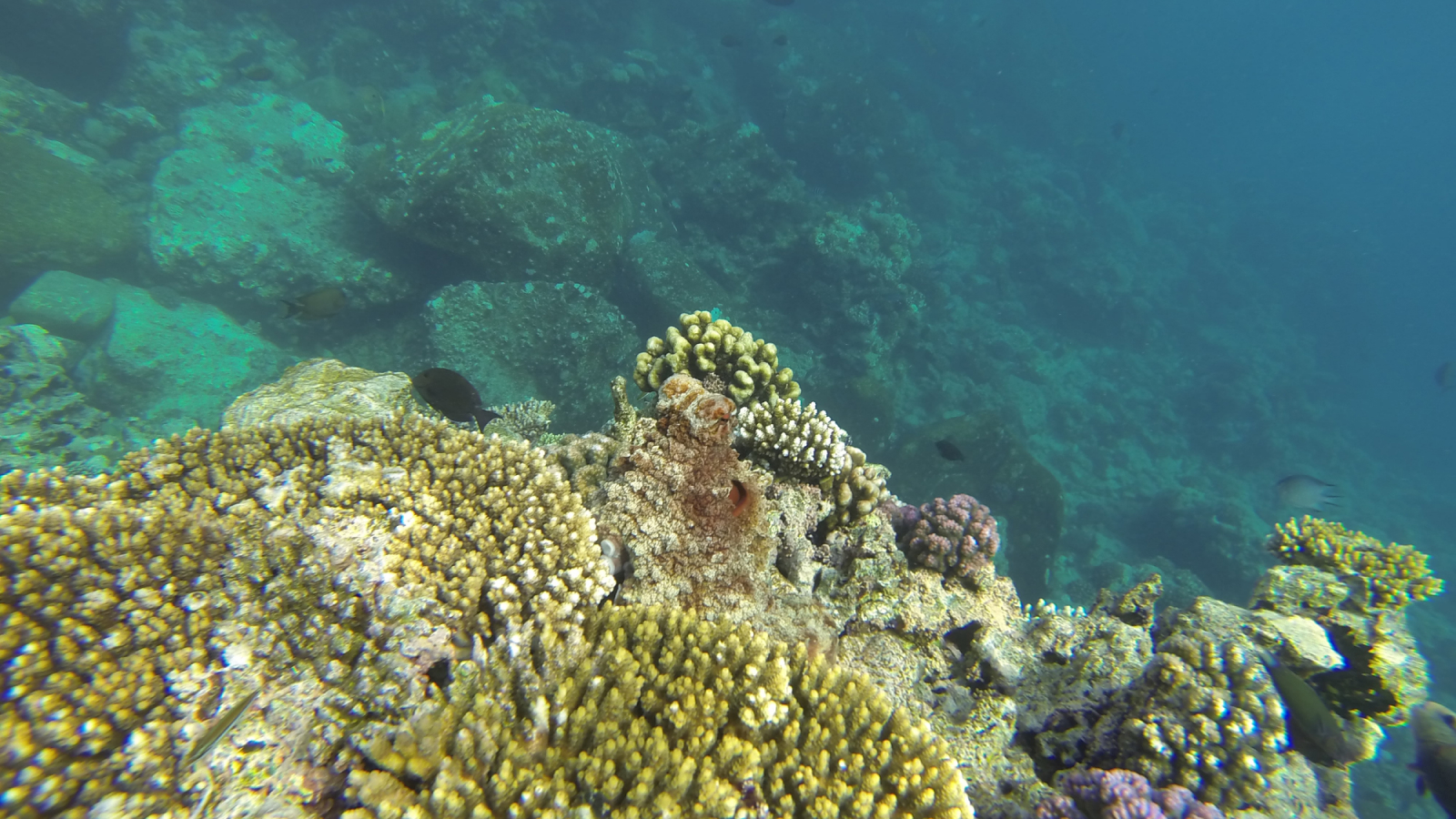
Nestled against the coral sits an octopus, the king of camouflage. These alien-like creatures can not only change the color of their bodies but also mimic textures.
An unwelcome tagalong
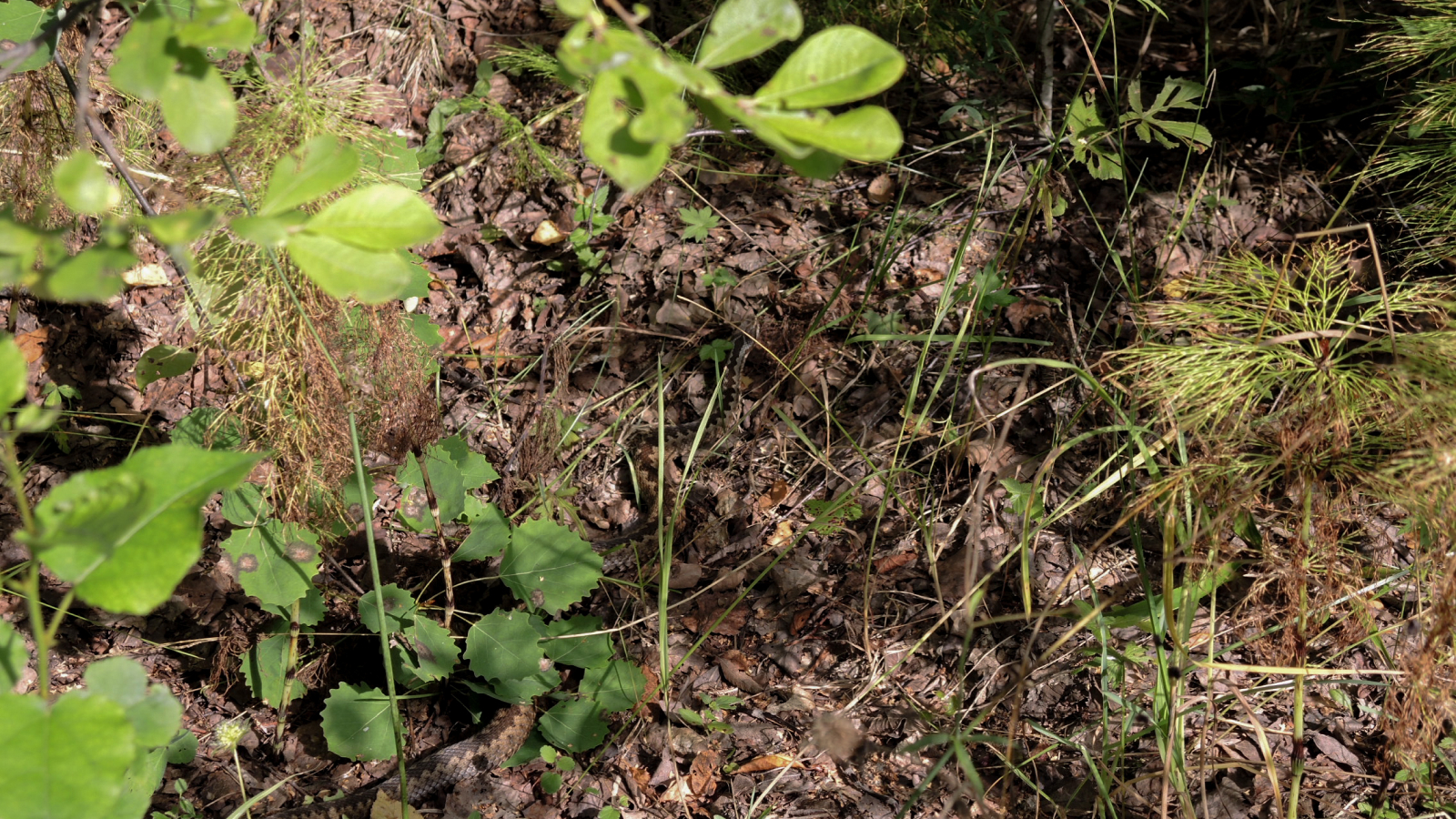
Be careful where you step!
At first glance, this photo may seem like a standard image taken during a hike — but the fallen leaves mask an unwelcome tagalong.
Viperidae is a family of snakes, commonly known as vipers, that are venomous, nocturnal and found all over the world. Some are very colorful. Others, like the one in this photo, are dark and marbled, allowing the snakes to blend into the scattered shadows on the forest floor.
Insect or plant?
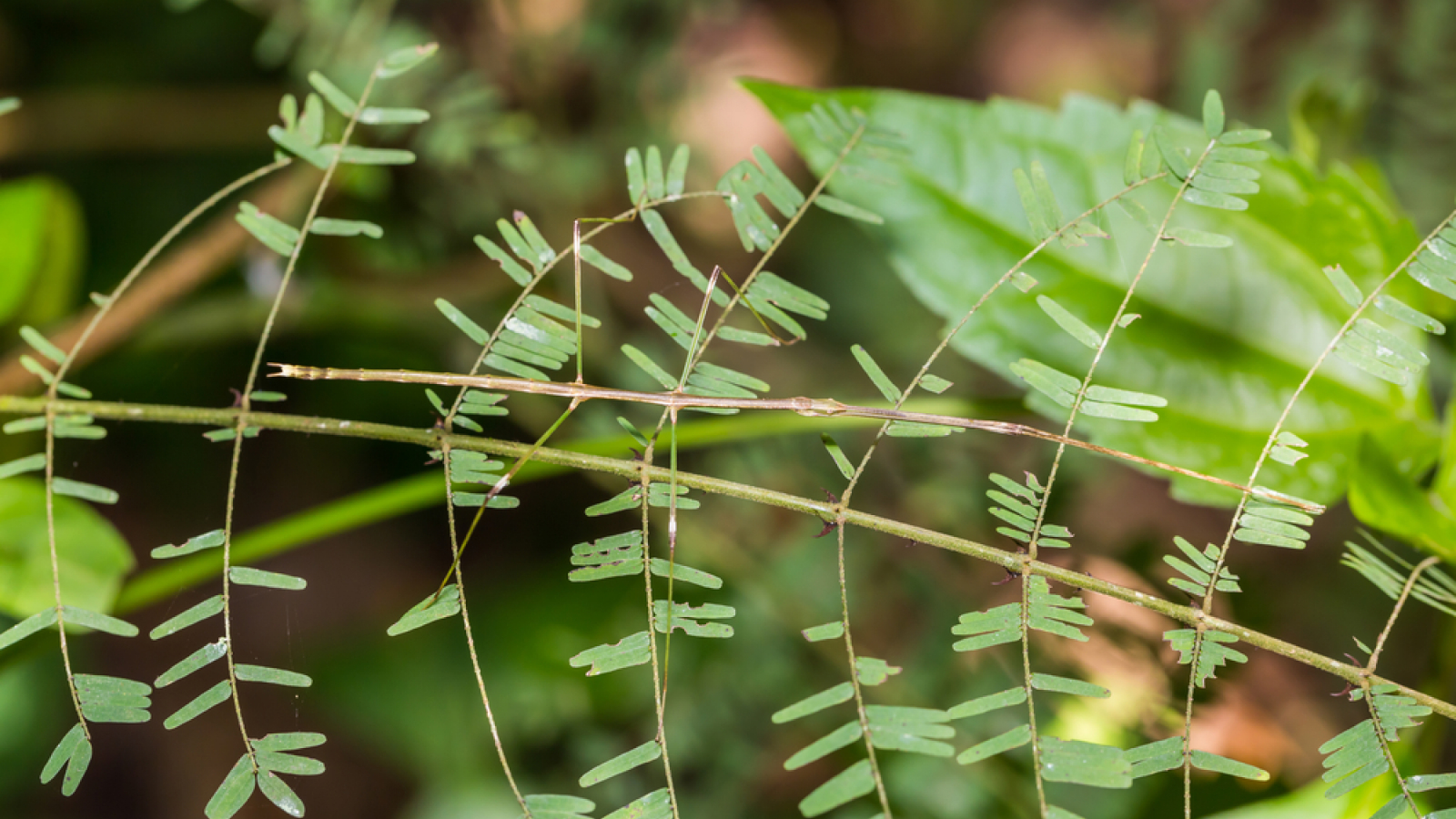
Stick insects are known for their mimicry of twigs or branches. Found in the tropics, these critters have elongated bodies and legs, making the insects tricky to spot among the plants.
Perched high in the trees
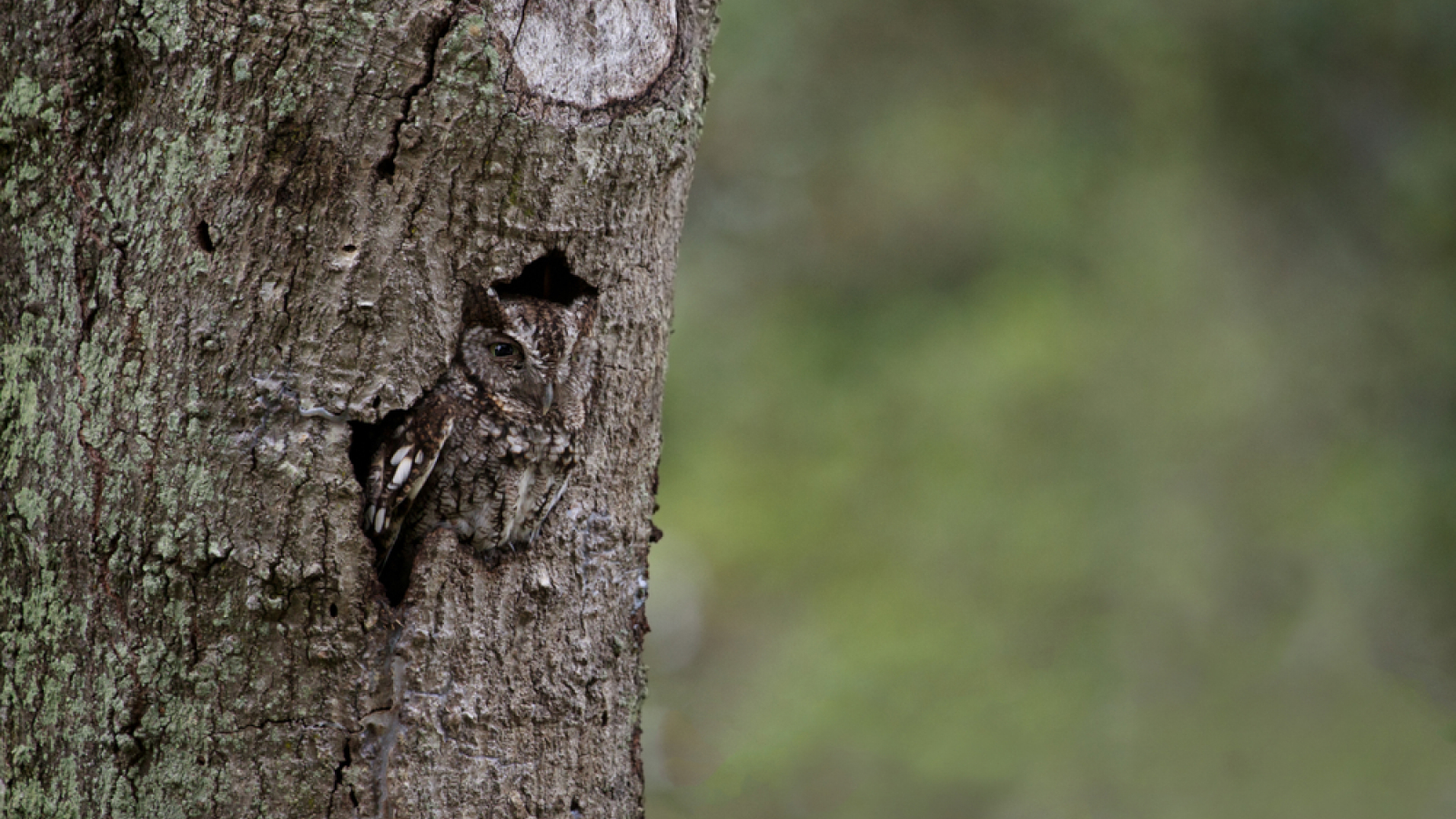
The Eastern screech owl (Megascops asio), native to North America, is a small bird known for its trill-like calls. With a height of around 6 to 10 inches (16 to 25 cm), it comes in two colors: red and gray. These nocturnal hunters often inhabit wooded areas and are cavity nesters, using abandoned nests or tree hollows.
Amongst the rocks and boulders

You have eagle eyes if you can spot the small bird in this photo.
Oenanthe melanura, commonly known as the blackstart, grows to a maximum height of 5.5 inches (14 cm). It is found in rocky habitats and arid landscapes across Southern Europe and North Africa, and often nests in rock crevices.
The floral mimicry of an orchid mantis
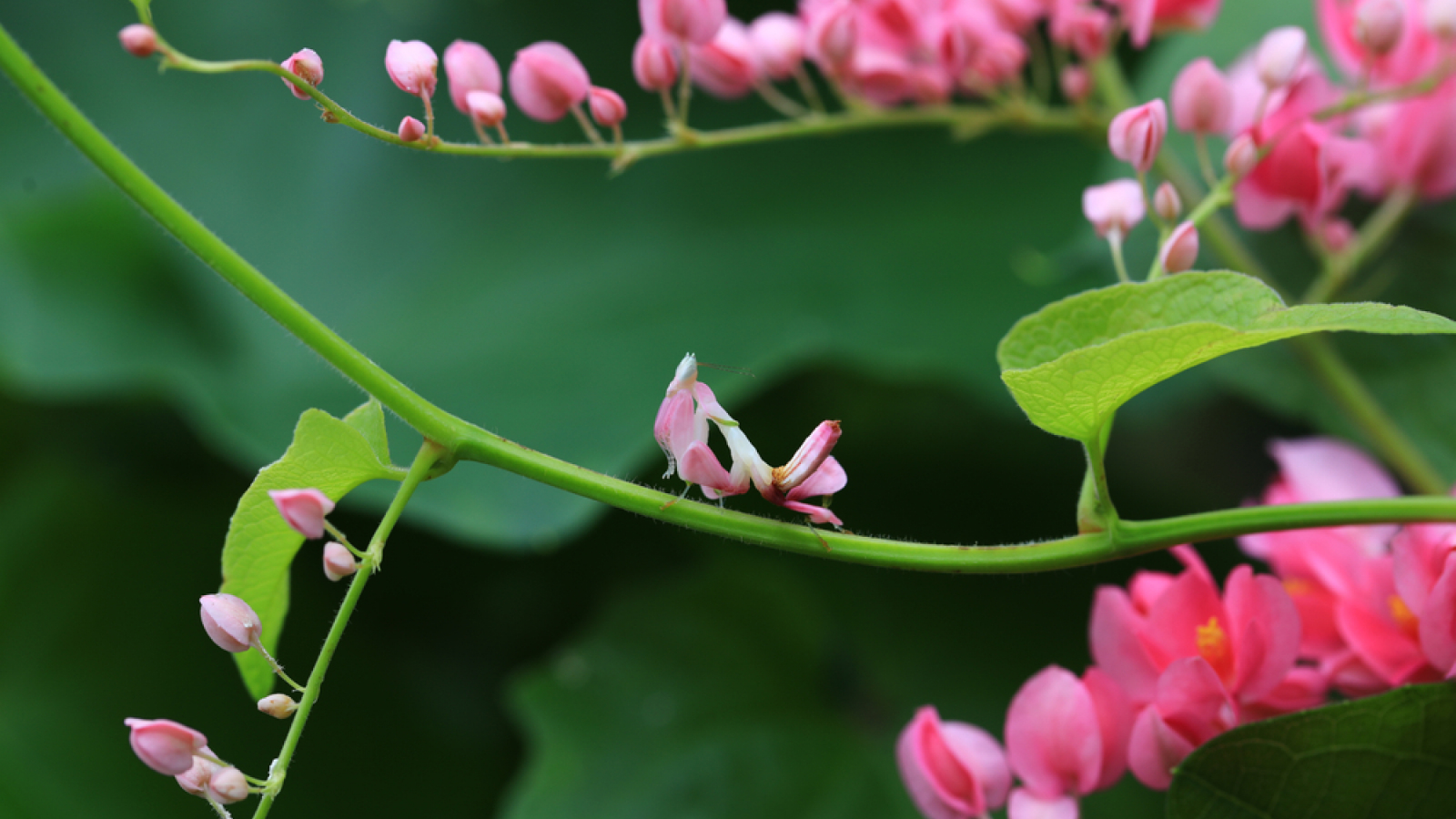
Orchid mantises (Hymenopus coronatus) look and behave like flowers. This behavior involves swaying from side to side to resemble a flower blowing in the wind. They use this technique for both hunting and hiding.
A stealthy stalker hidden in the tall grass
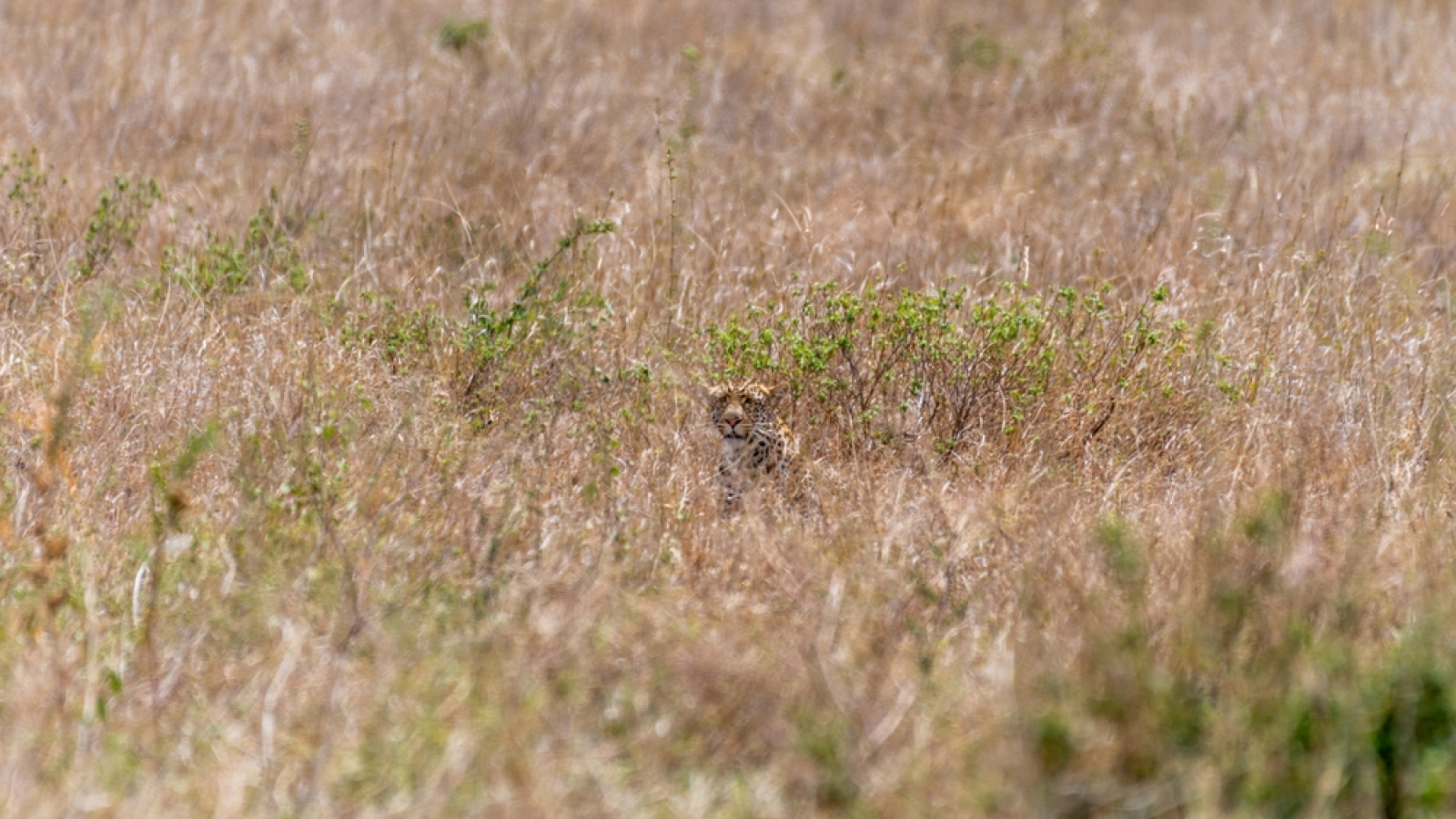
The fastest mammal in the world is also one of the best-camouflaged animals. The spots on cheetahs (Acinonyx jubatus) help camouflage their bodies by offsetting shadows against the tall grasses in their habitats. While camouflaged, they can stalk their prey without being seen and protect their cubs from predators.
Eurasian bittern amongst the reeds
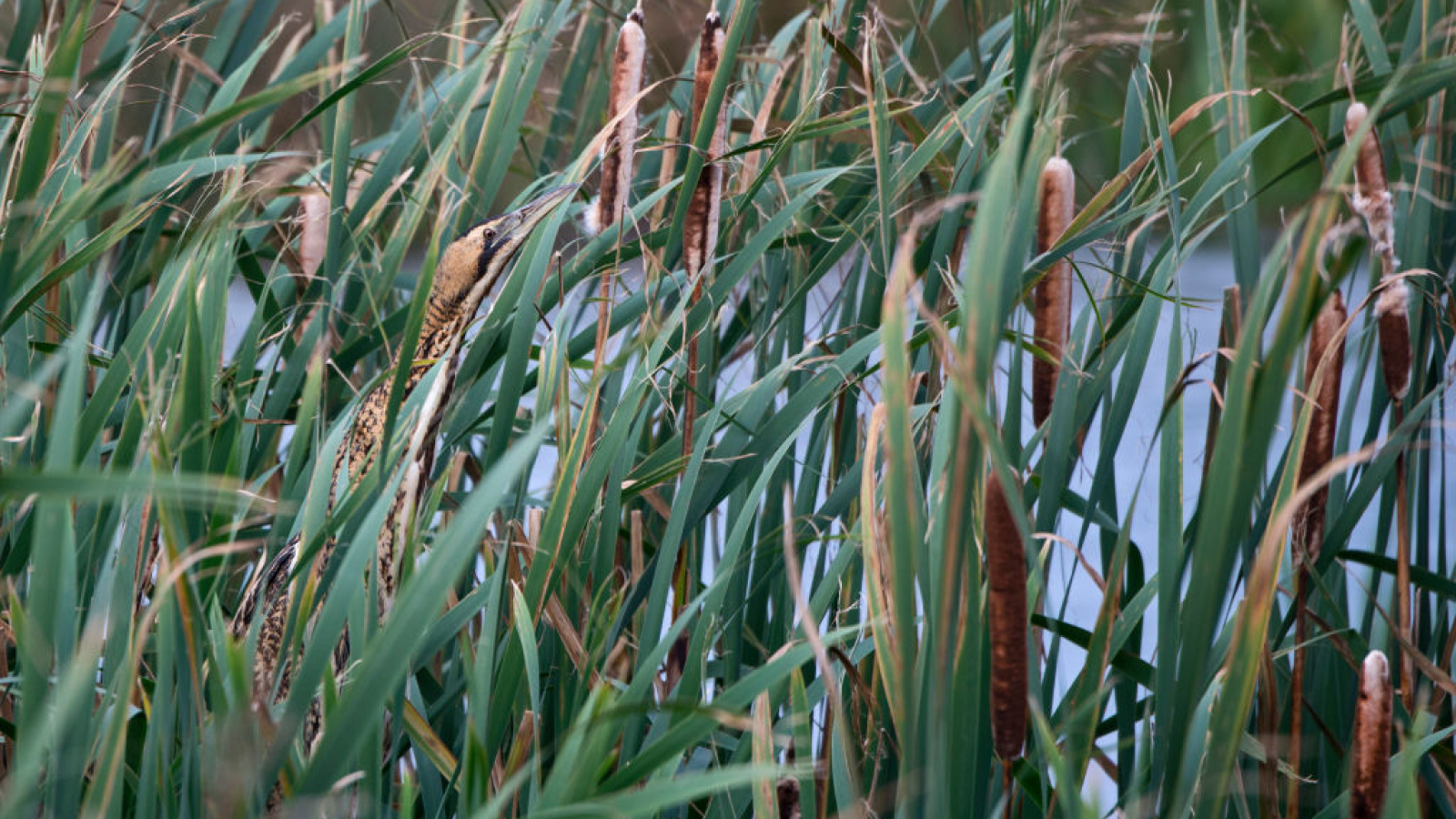
The Eurasian bittern (Botaurus stellaris) is a wading bird known for its elusiveness and camouflaged plumage. Found in wetlands across Europe and Asia, it is known for its booming calls during breeding season.
Frosty disguise of an arctic hare
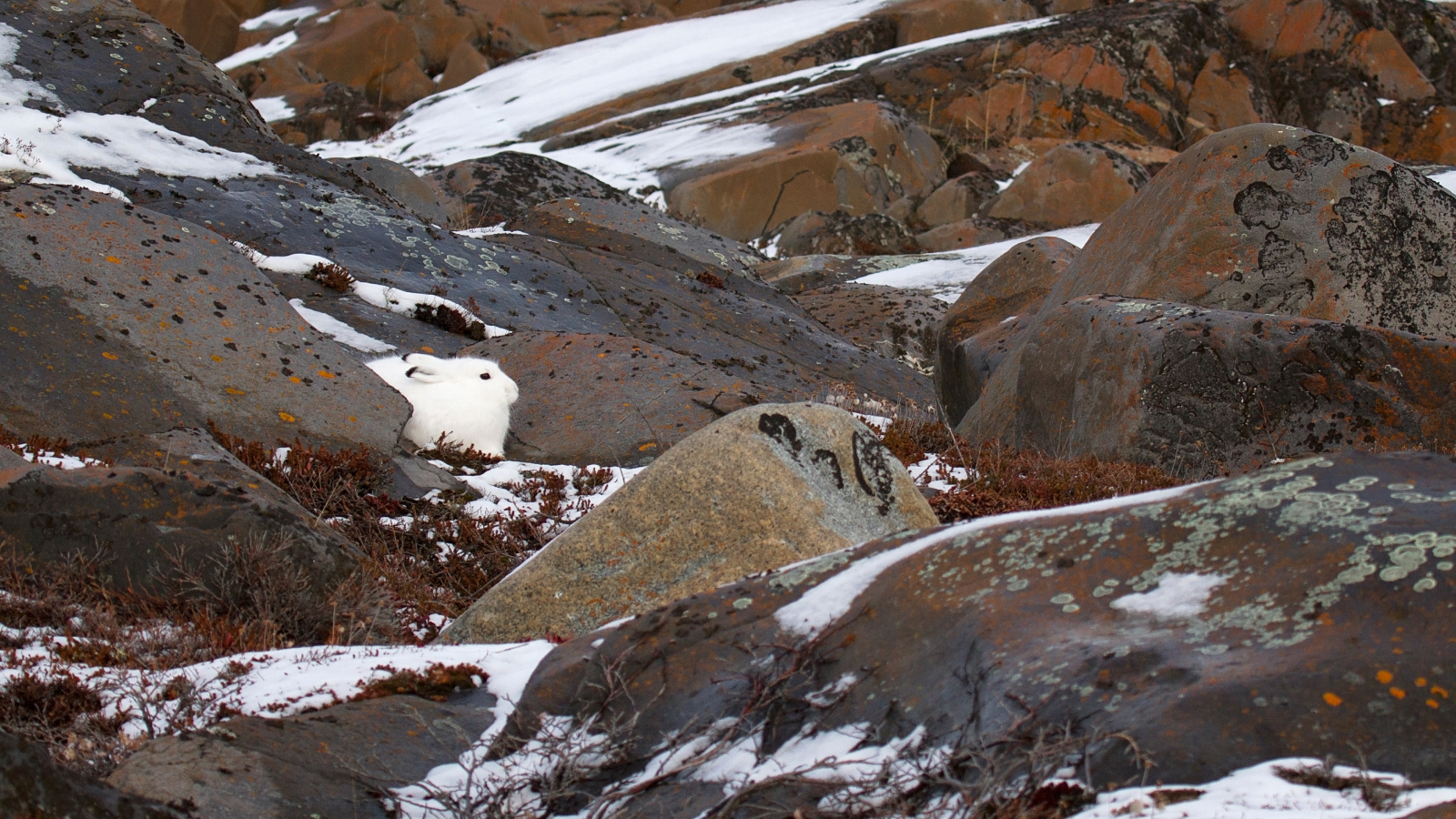
The Arctic hare (Lepus arcticus) is adapted to harsh Arctic climates. Known for its white fur in the winter and dark fur in the summer, it has large hind legs and padded feet that hold its weight above thick snow for running swiftly at up to 37 mph (60 km/h).
Mealy amazon parrots
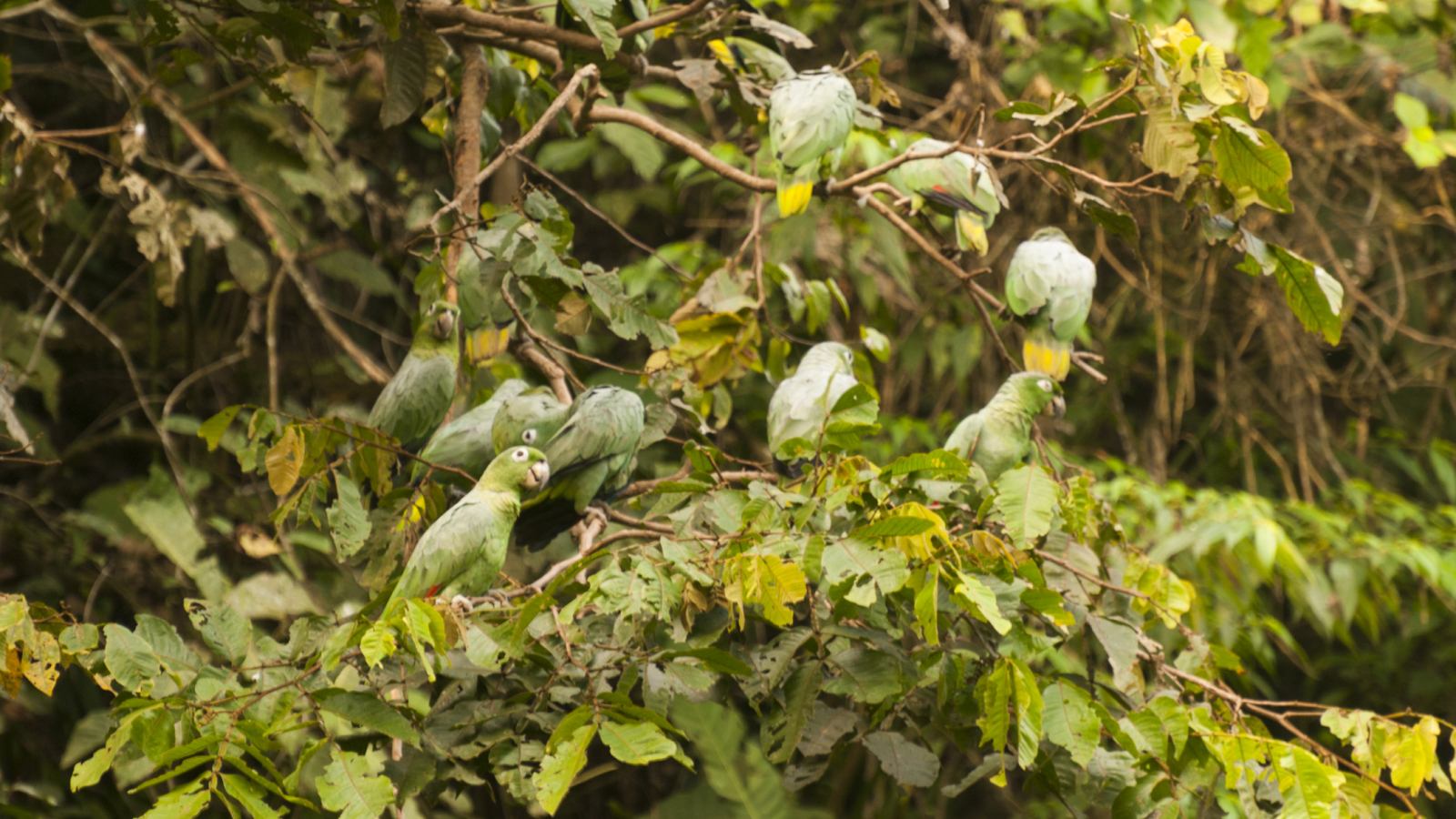
How many can you see?
A group of southern mealy Amazon parrots (Amazona farinosa) is found high in a subtropical forest in Ecuador.
Long-spinnered bark spider
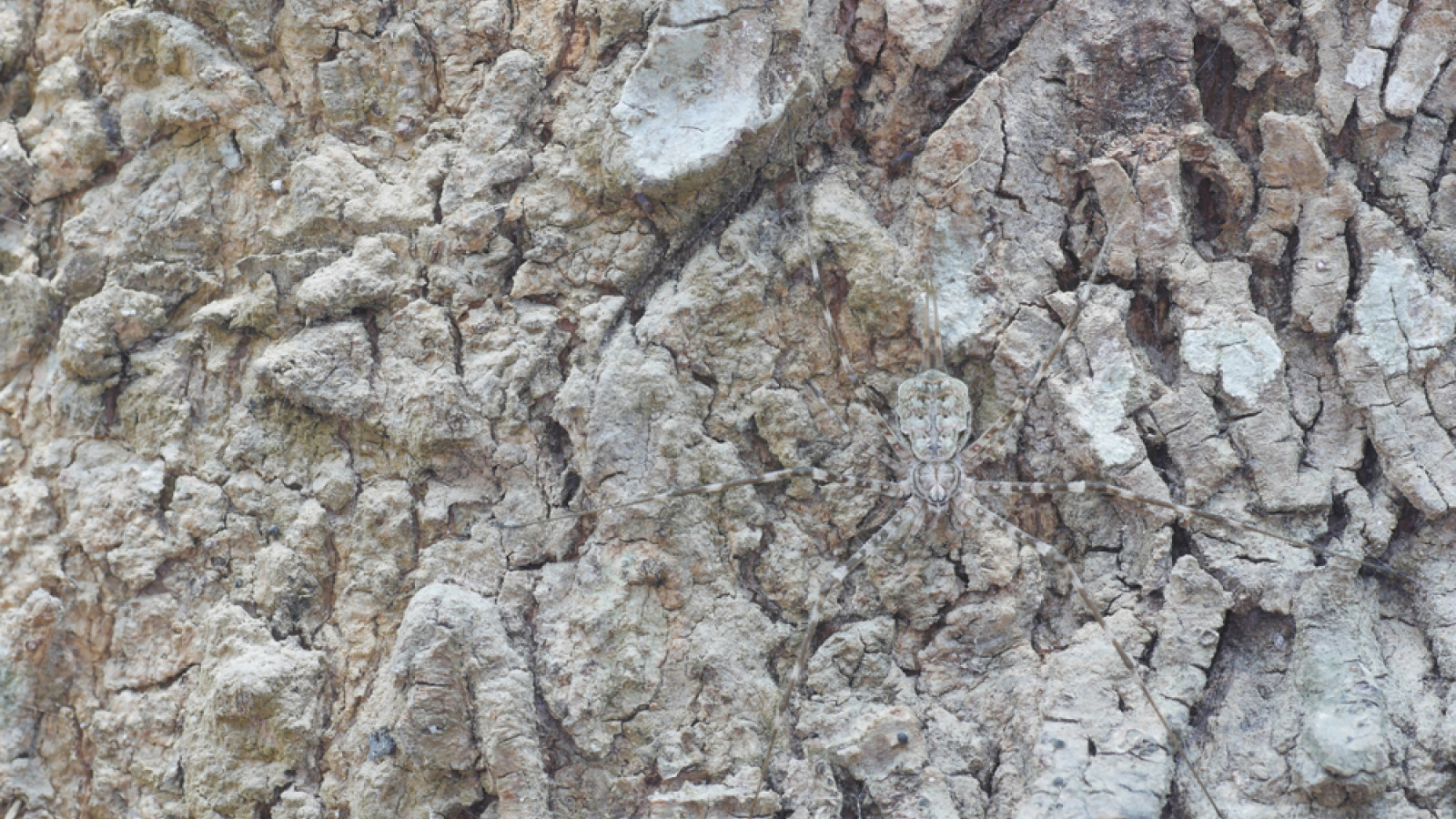
Can you find the eight-legged trickster hidden in this photo?
This spider is known as a long-spinnered bark spider or two-tailed spider, part of the genus Hersilia. It is named after its large spinnerets, the silk-spinning organ on the back of its abdomen.





